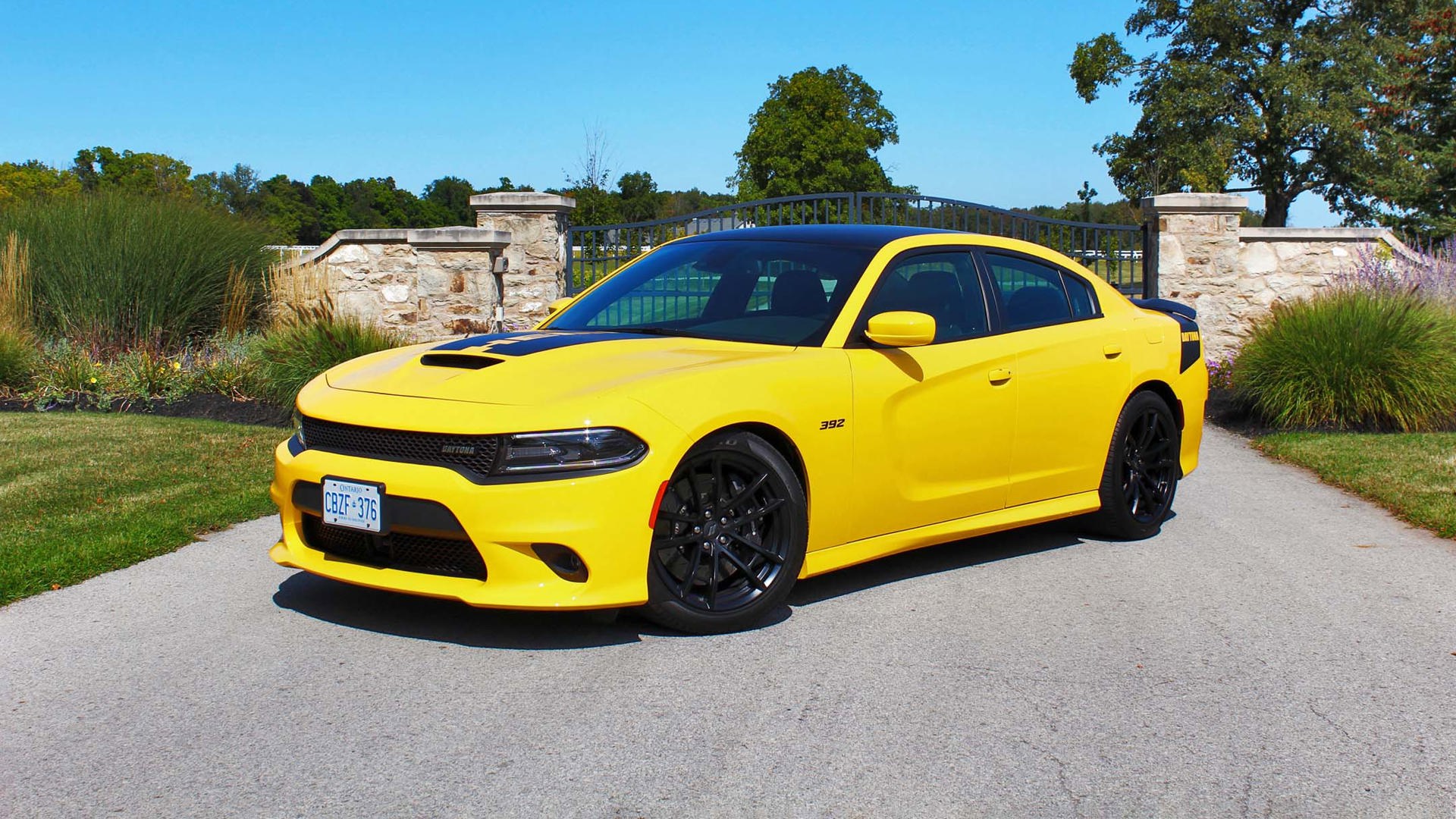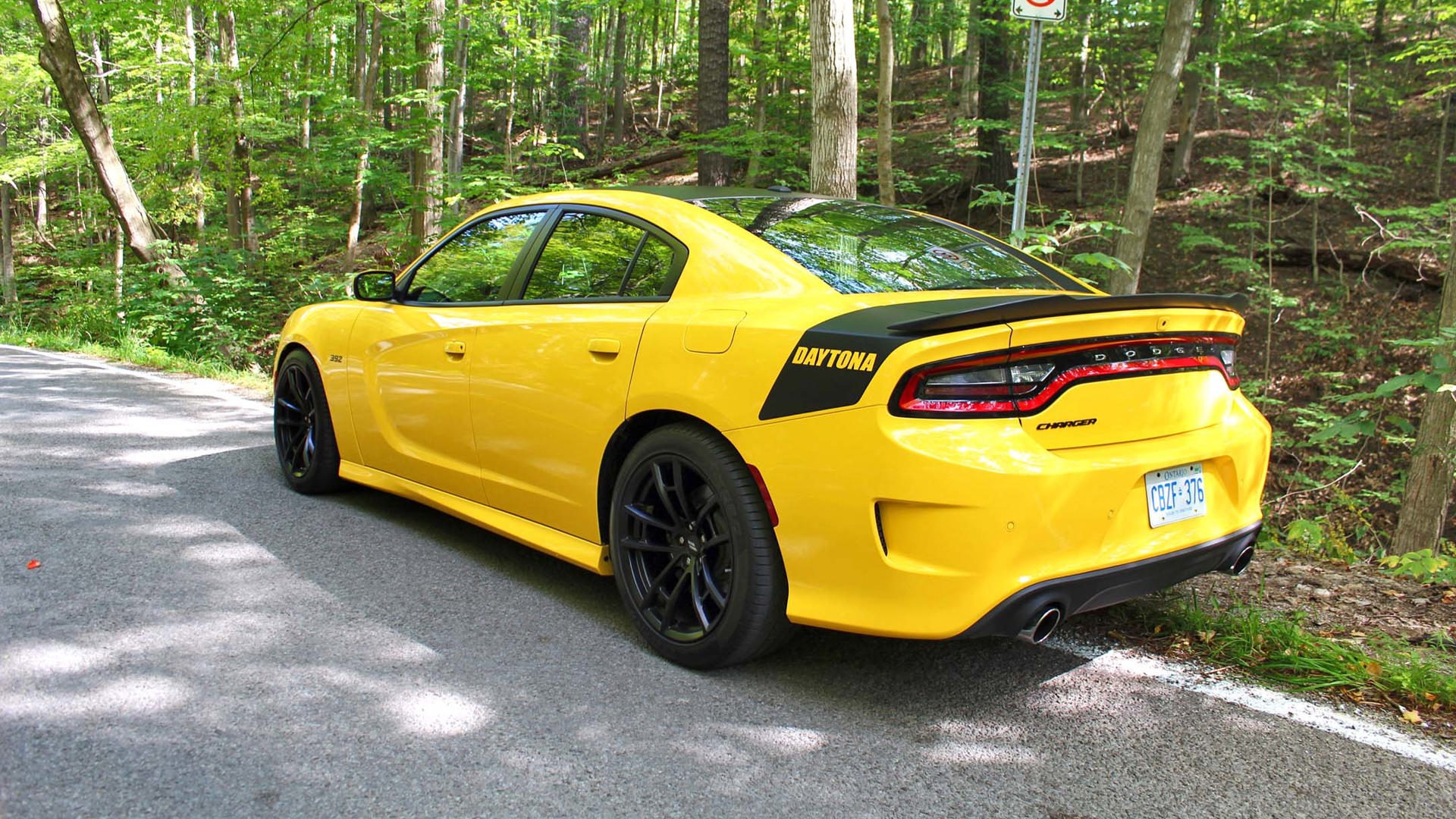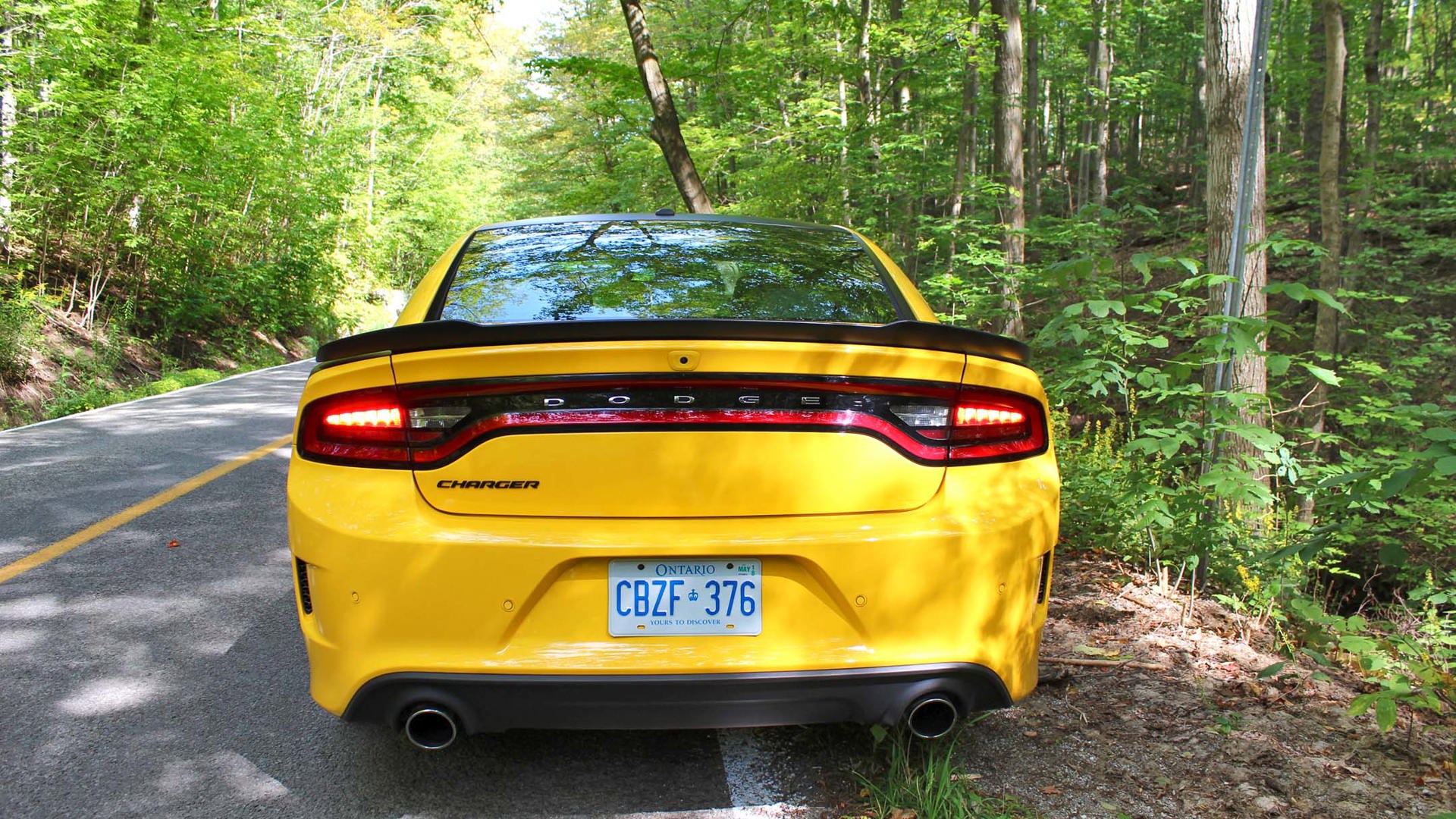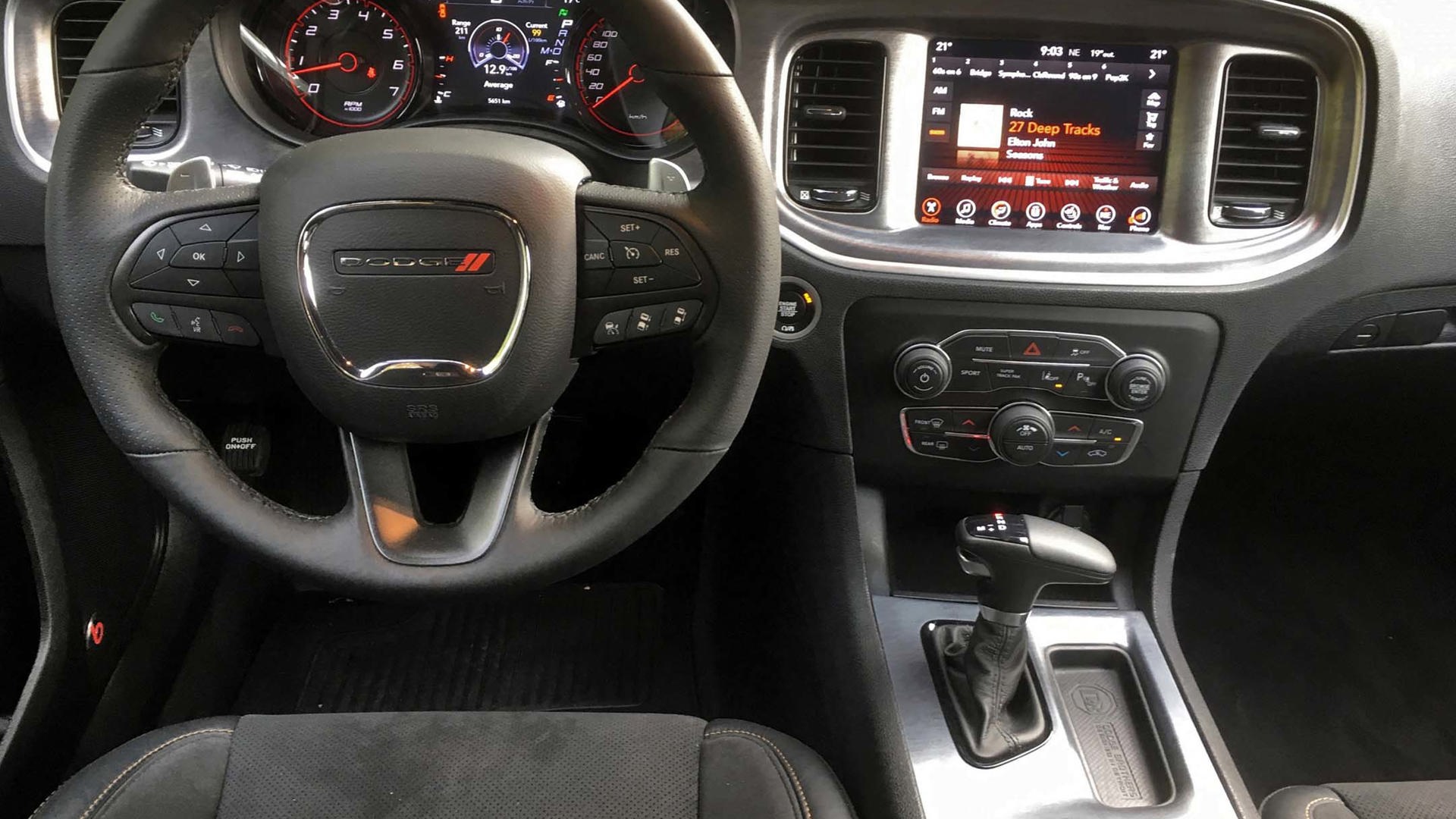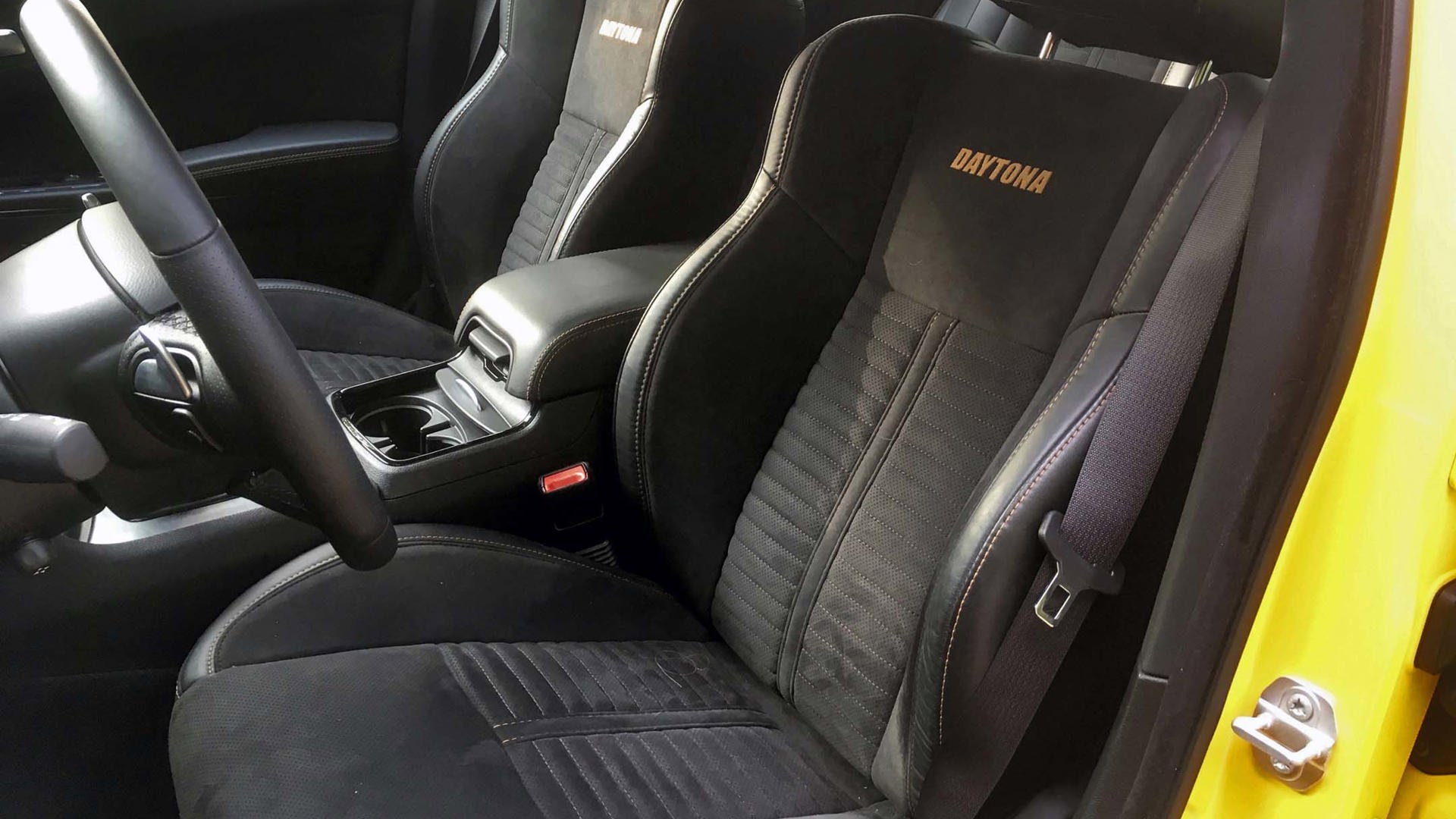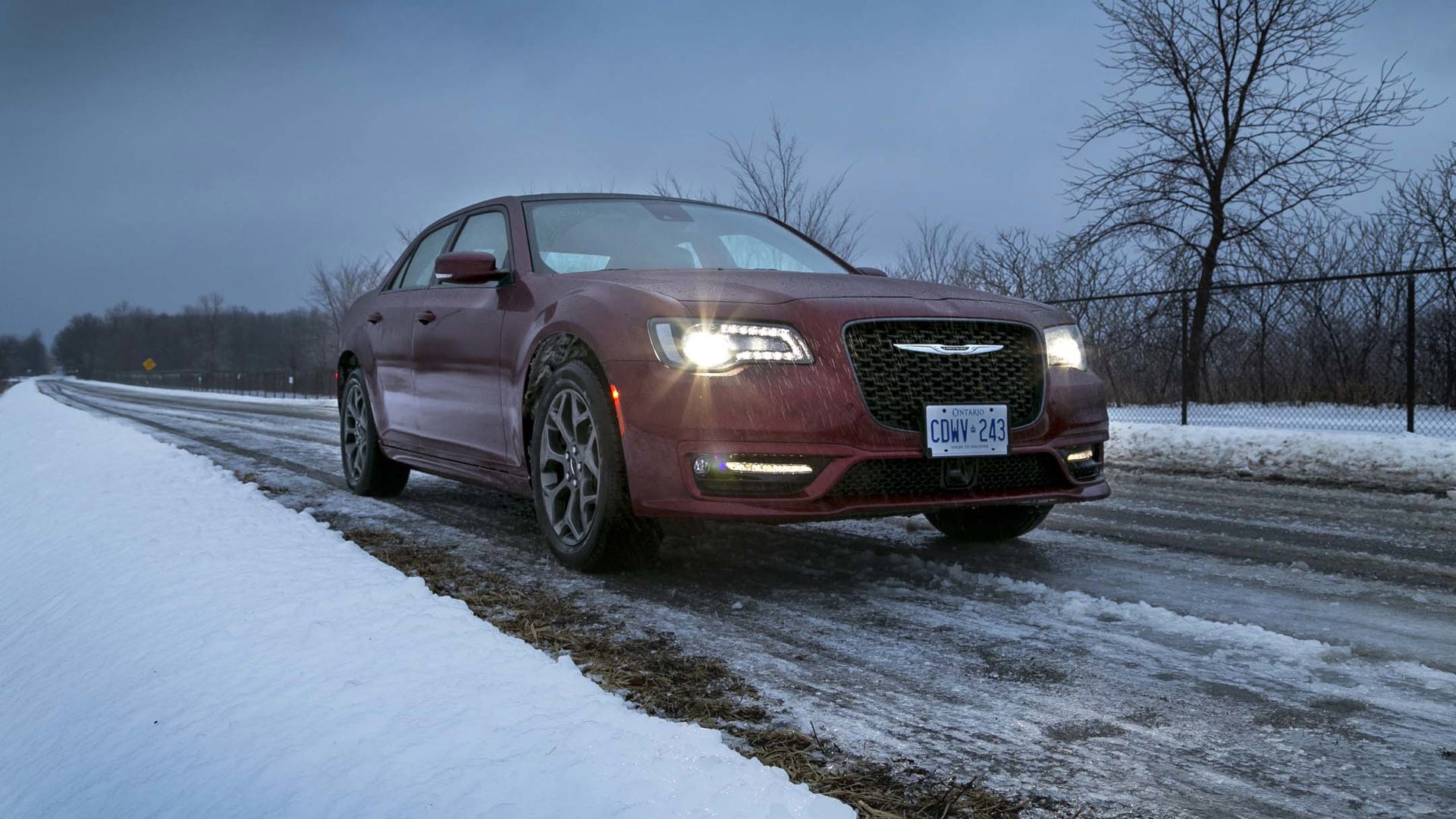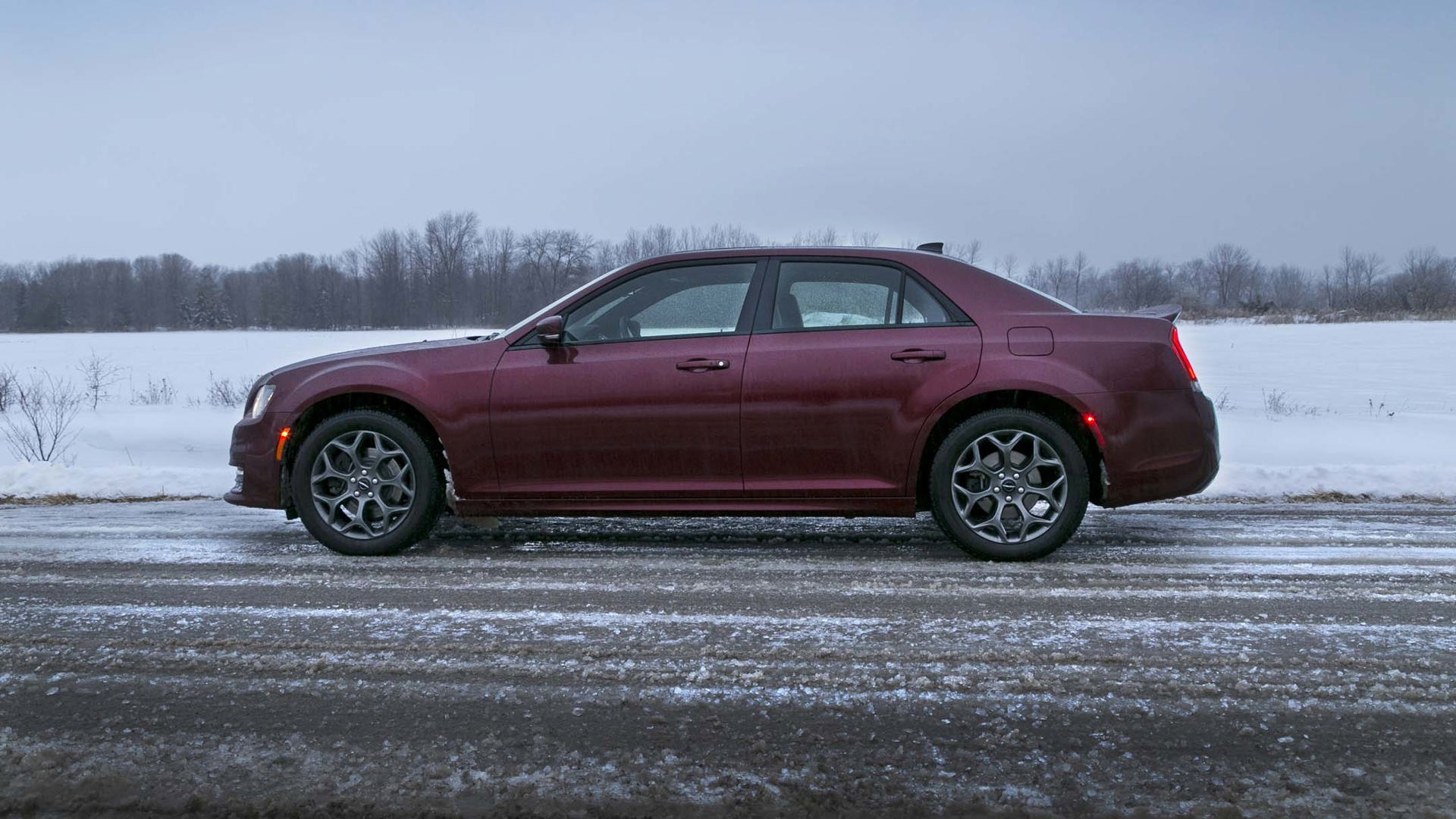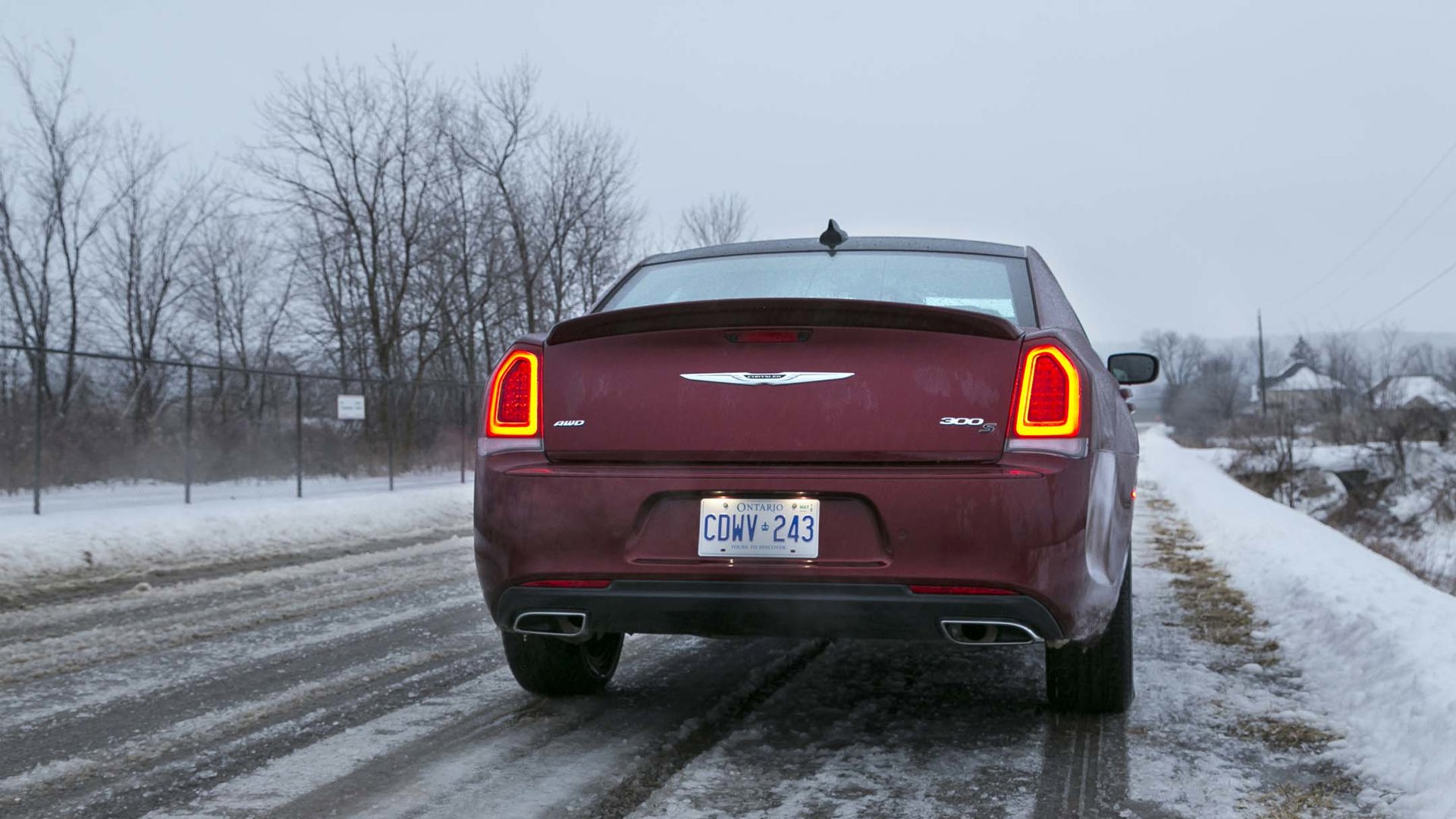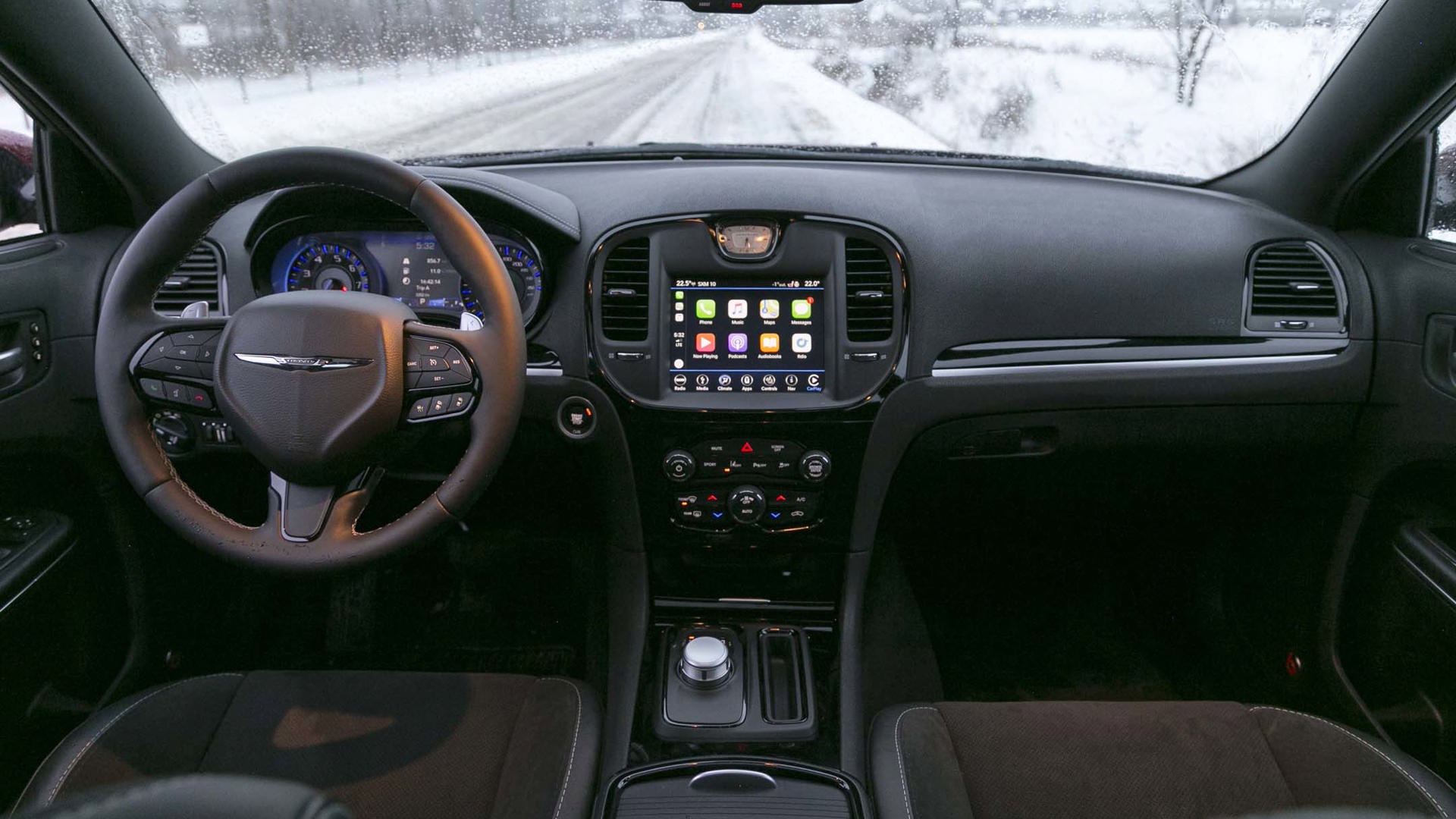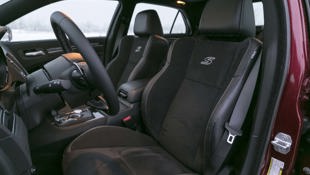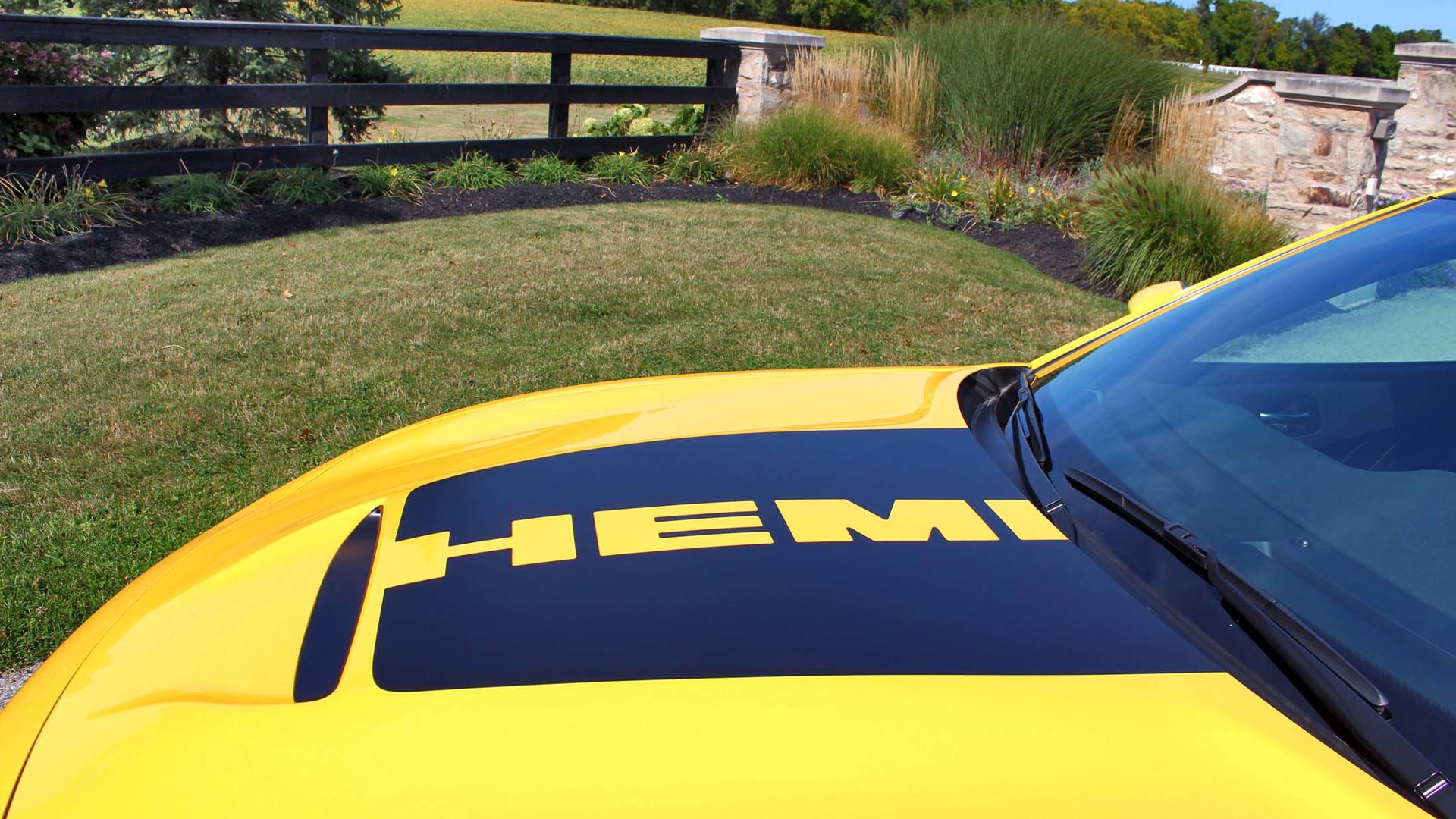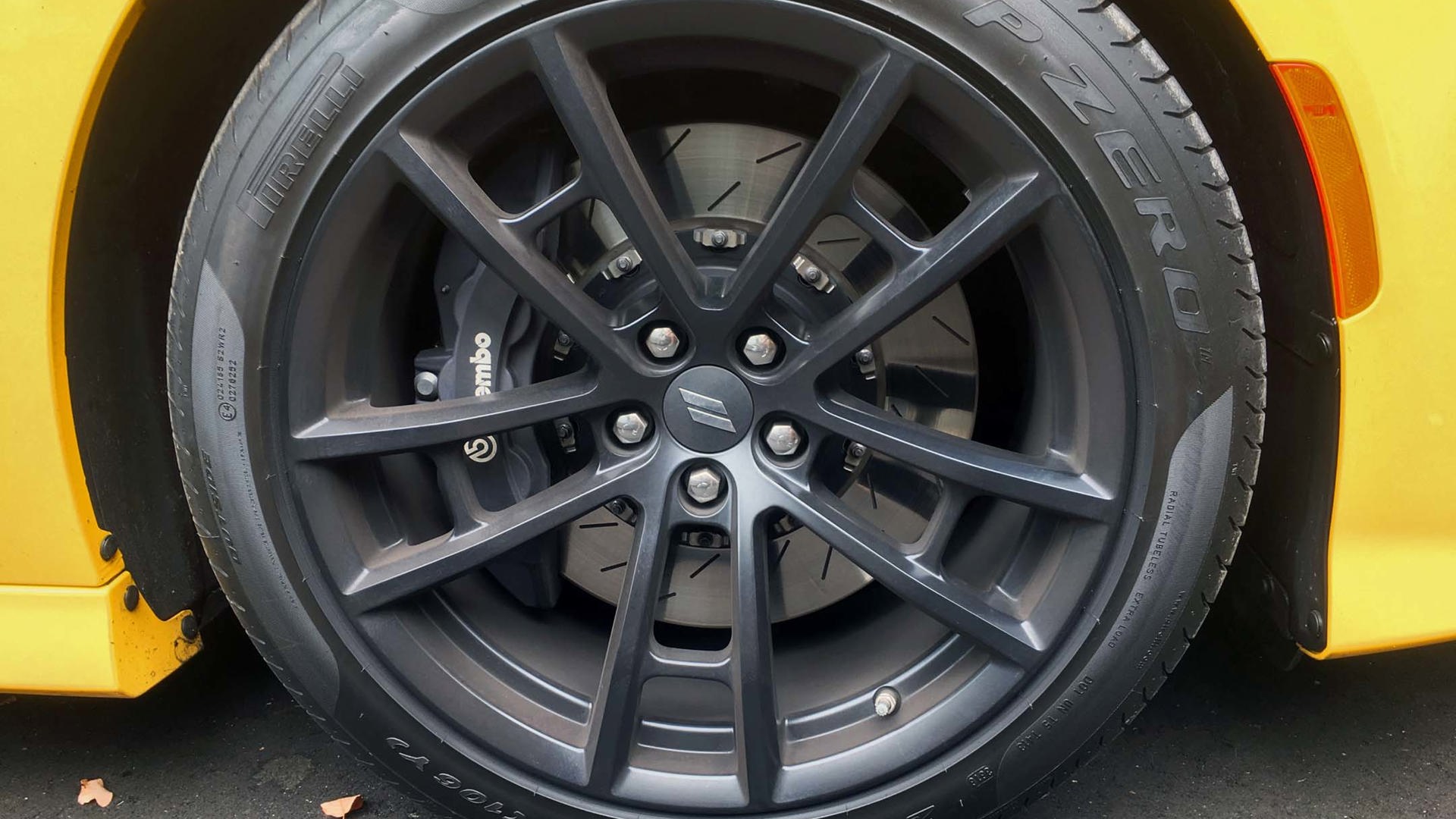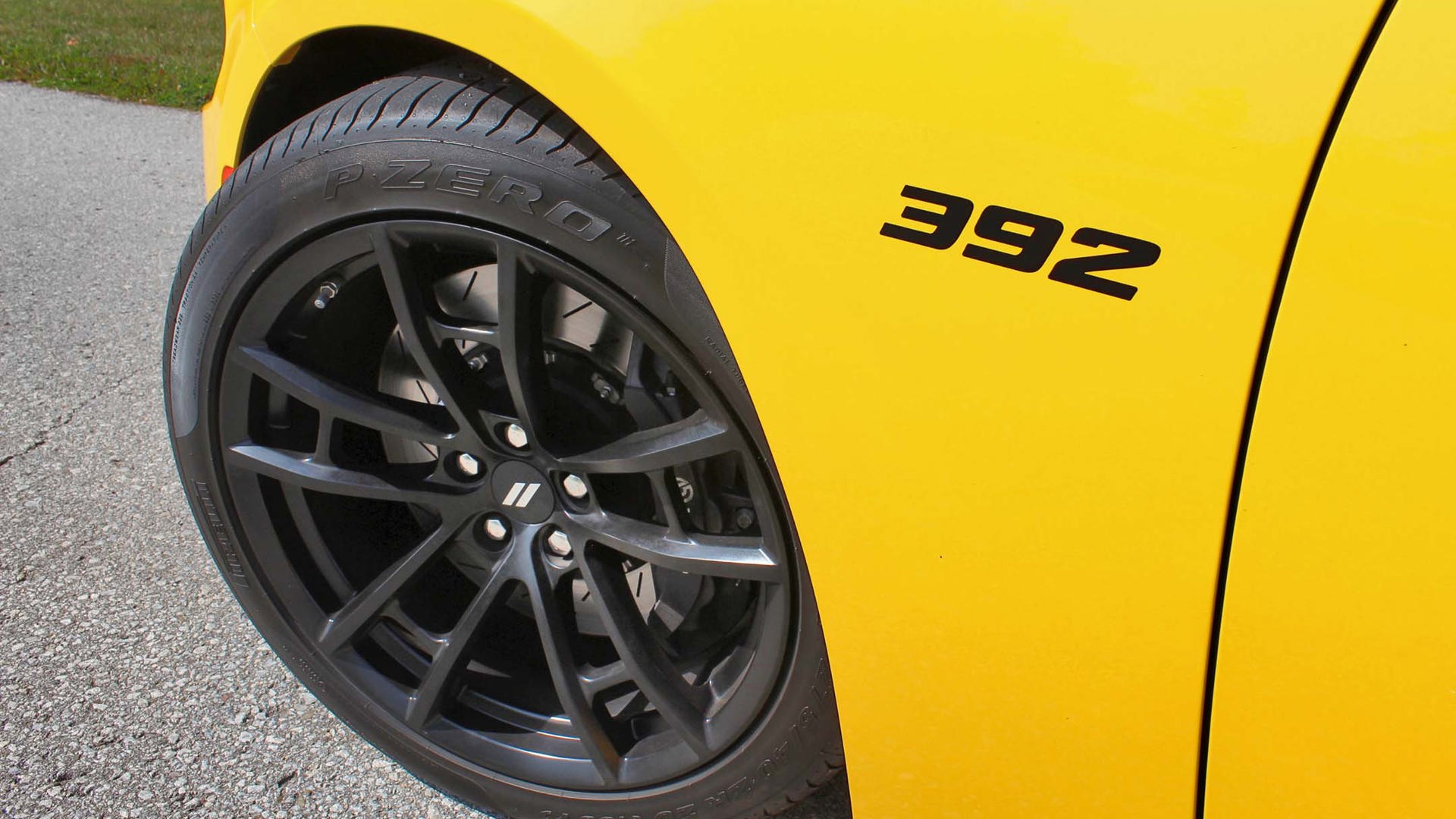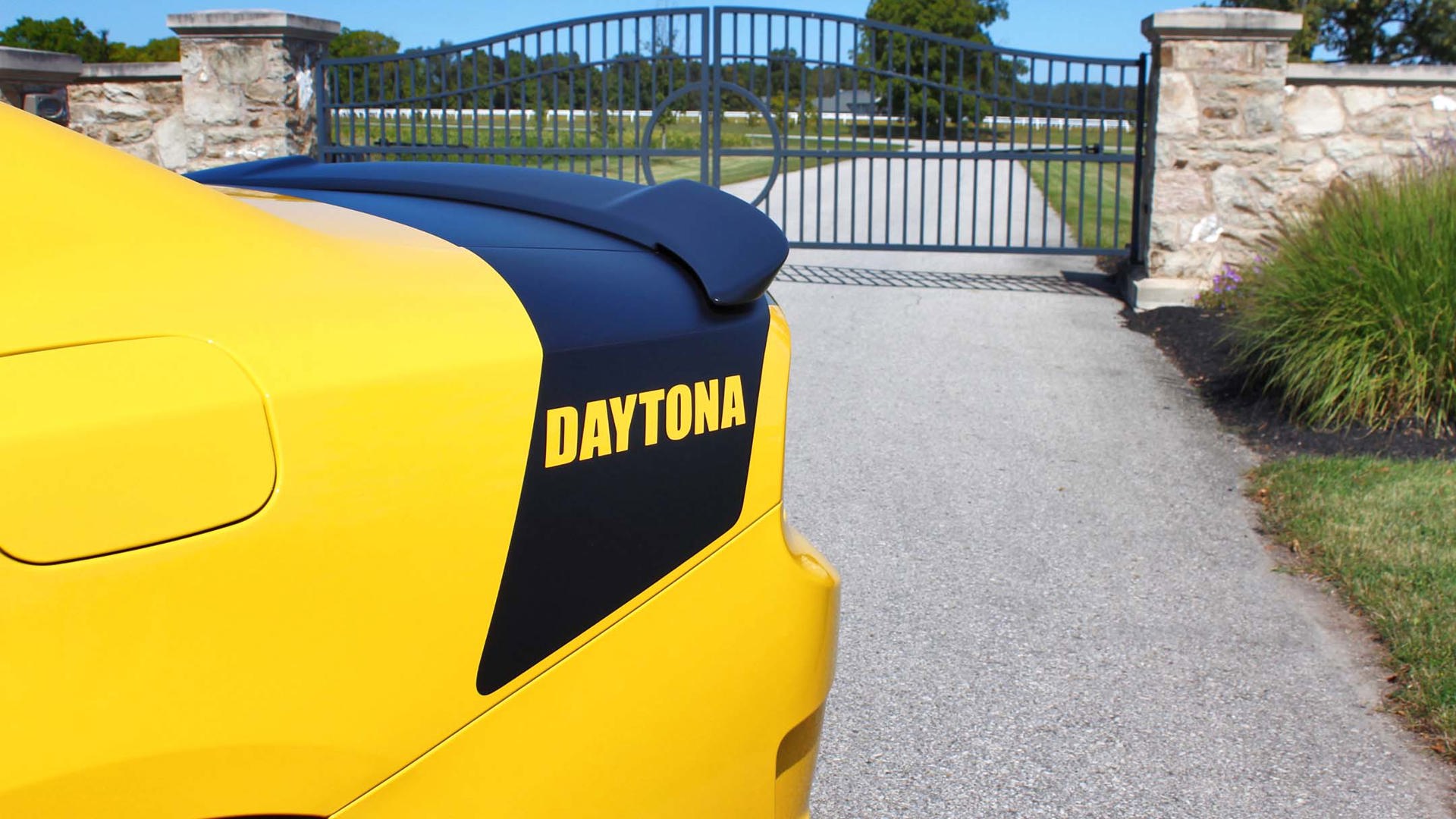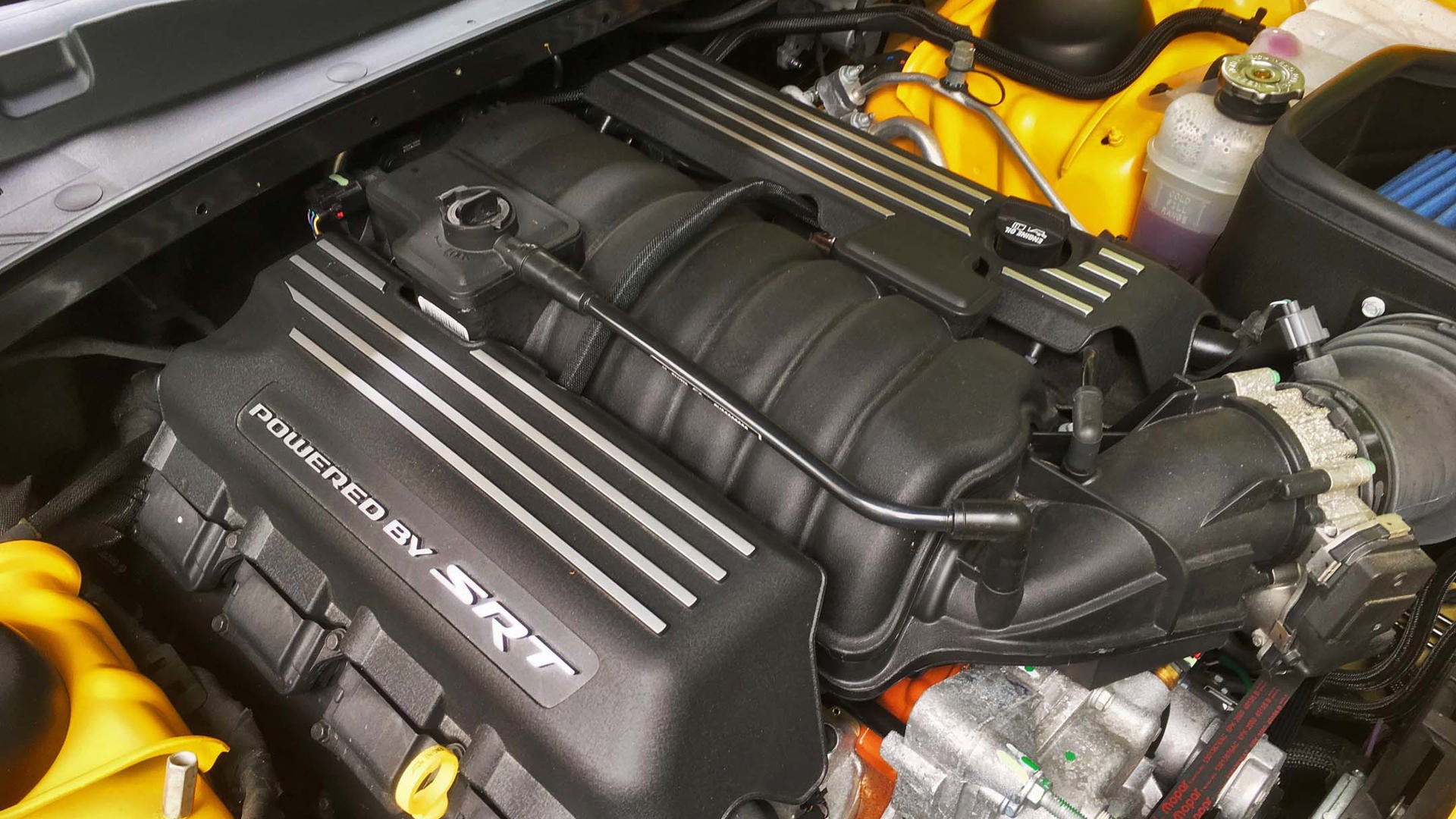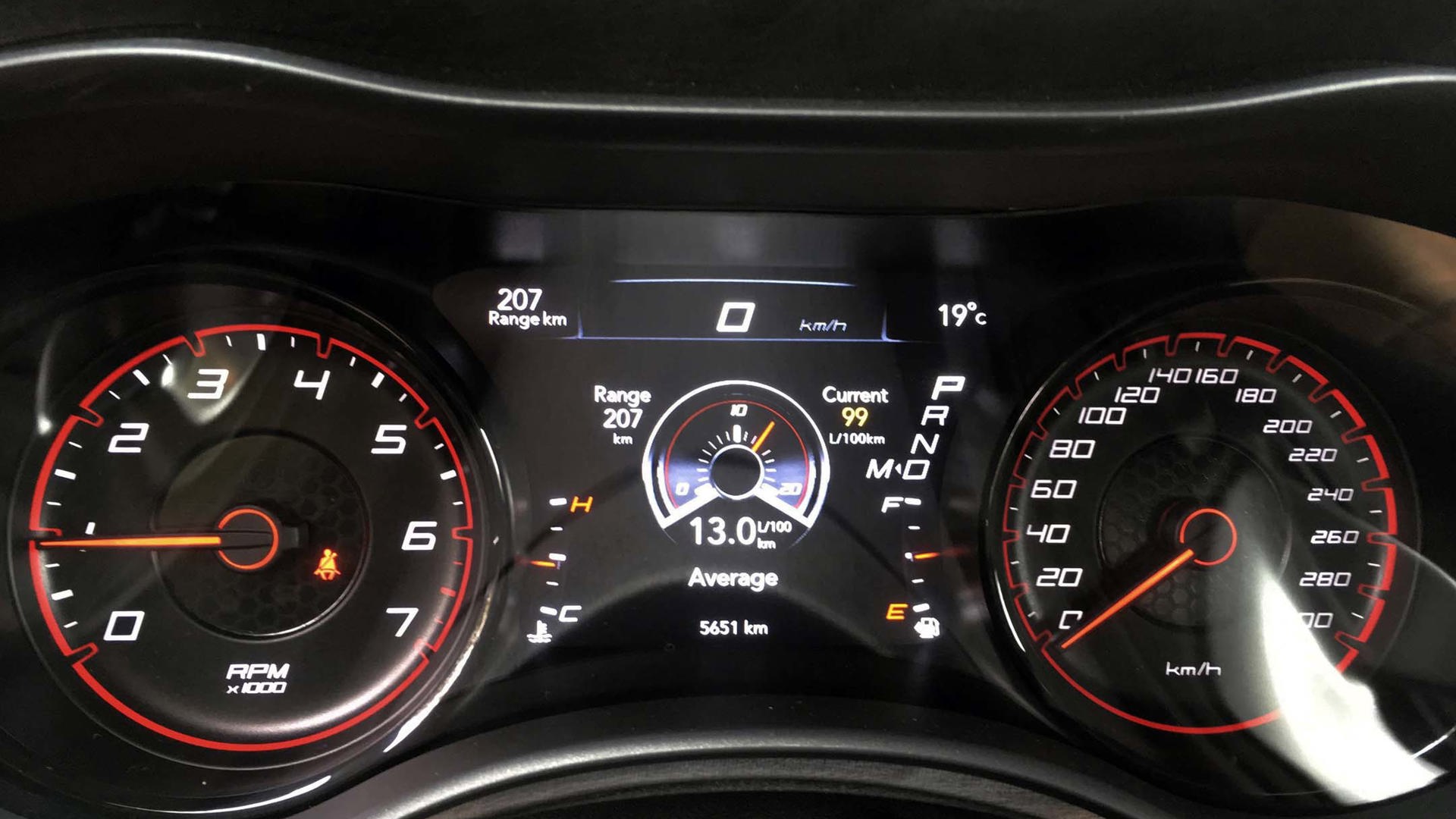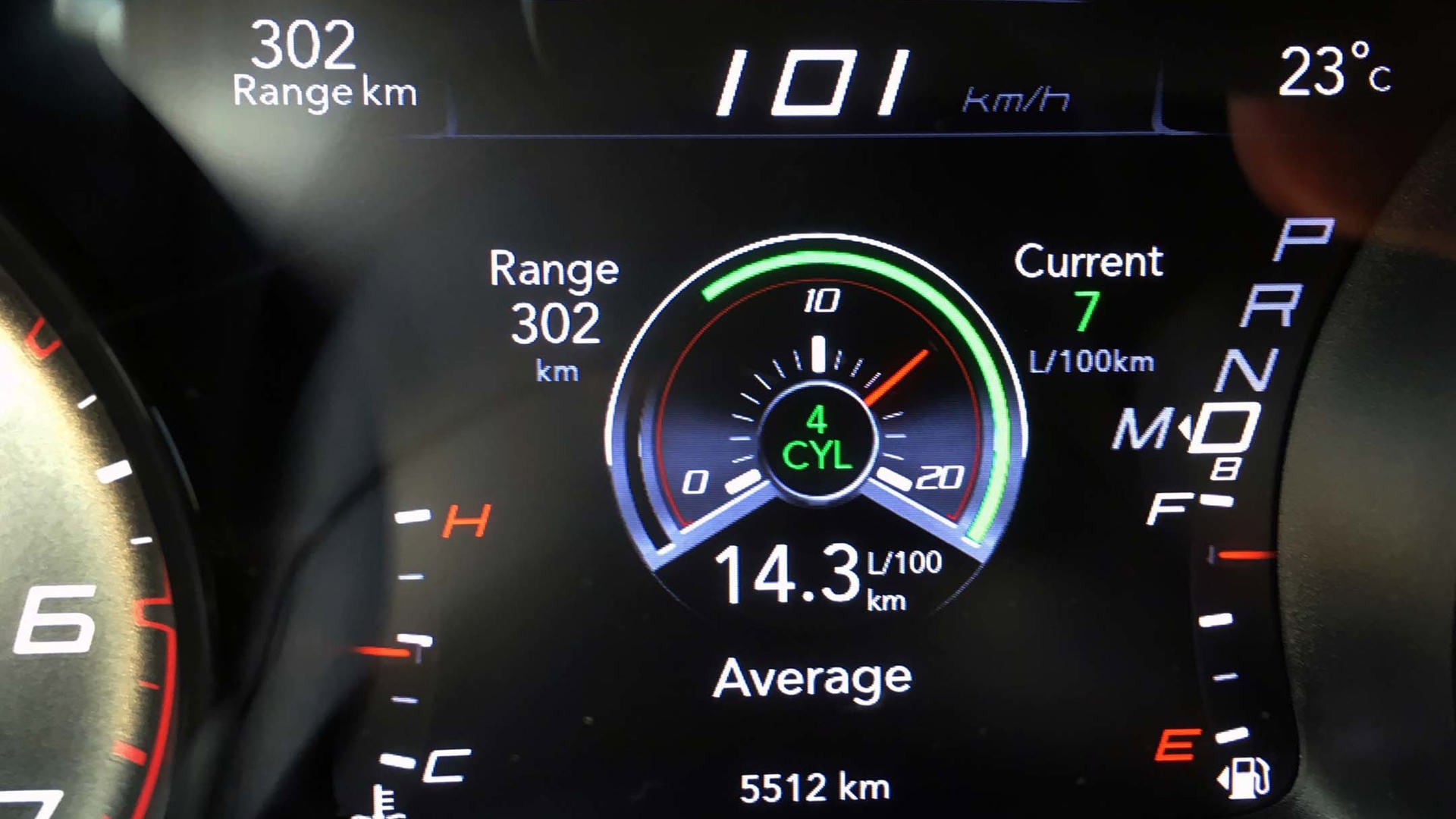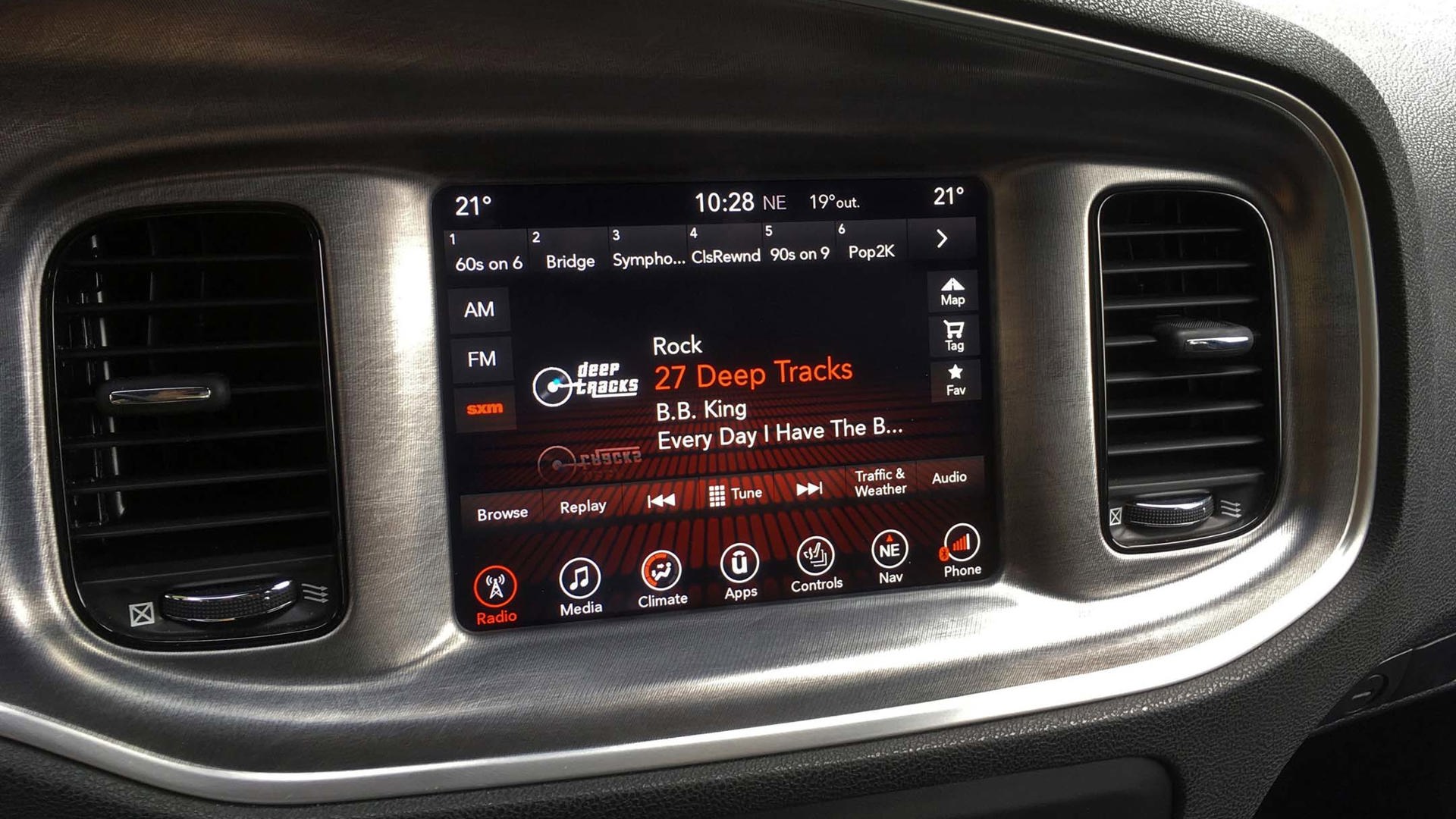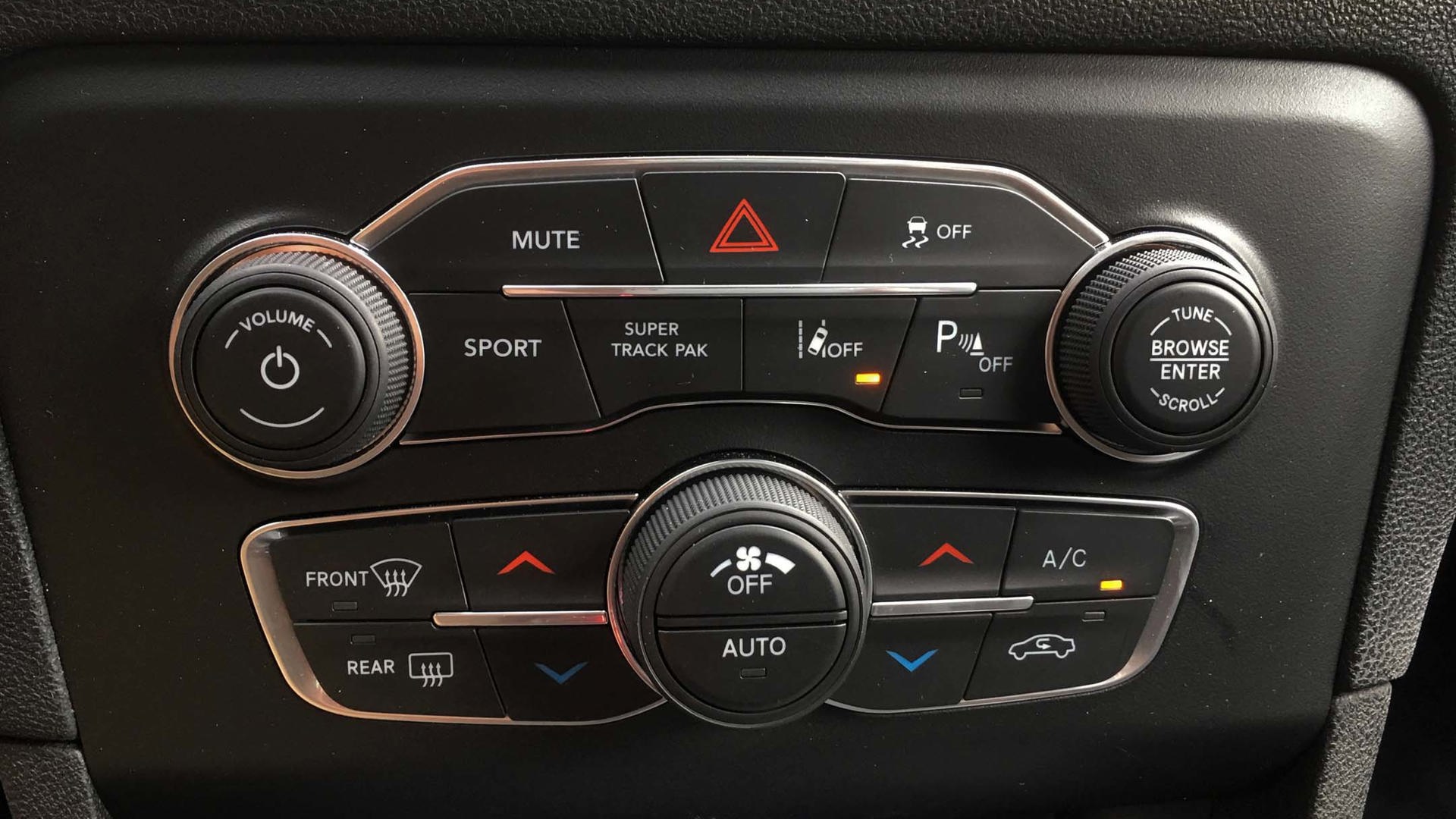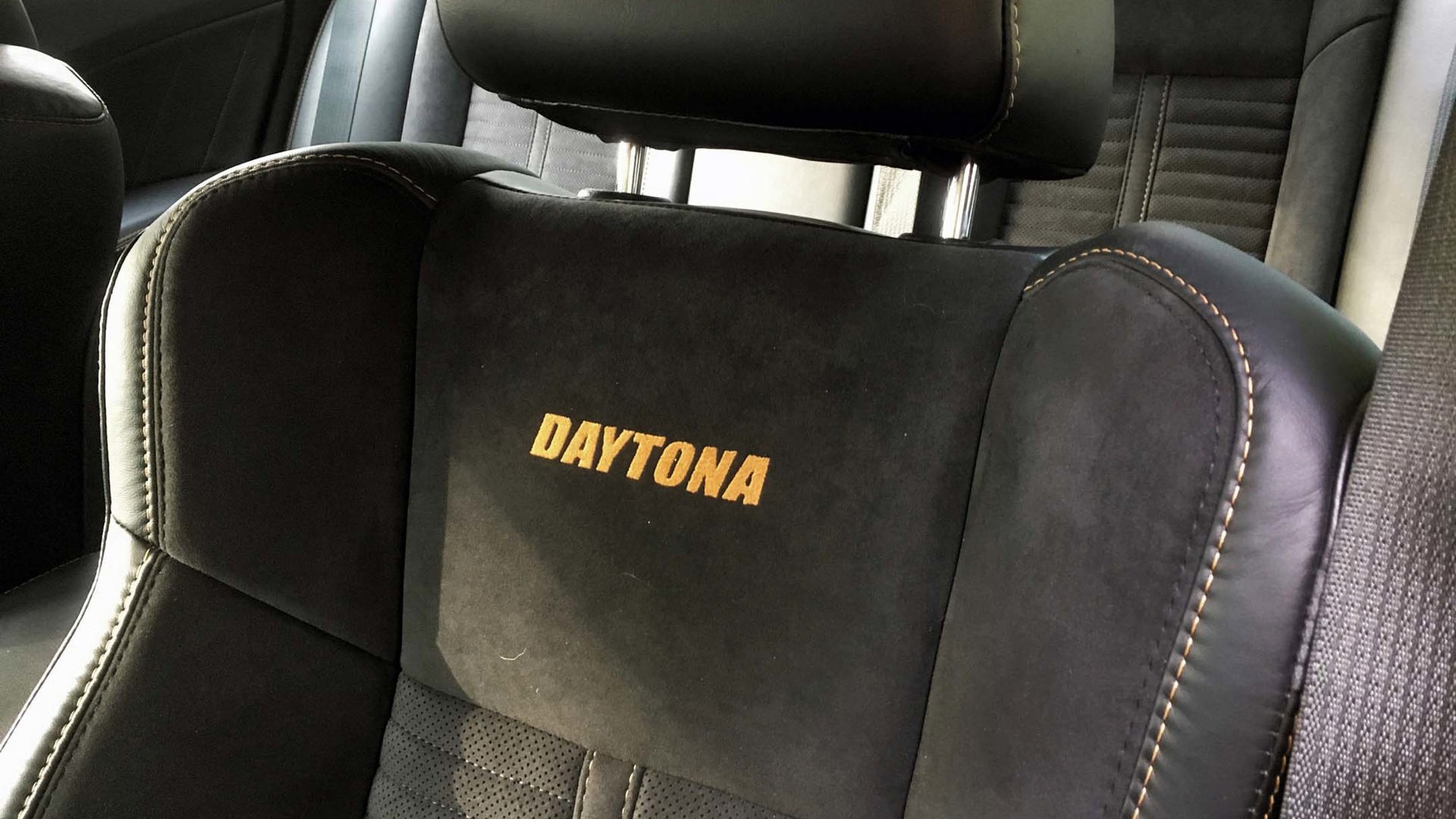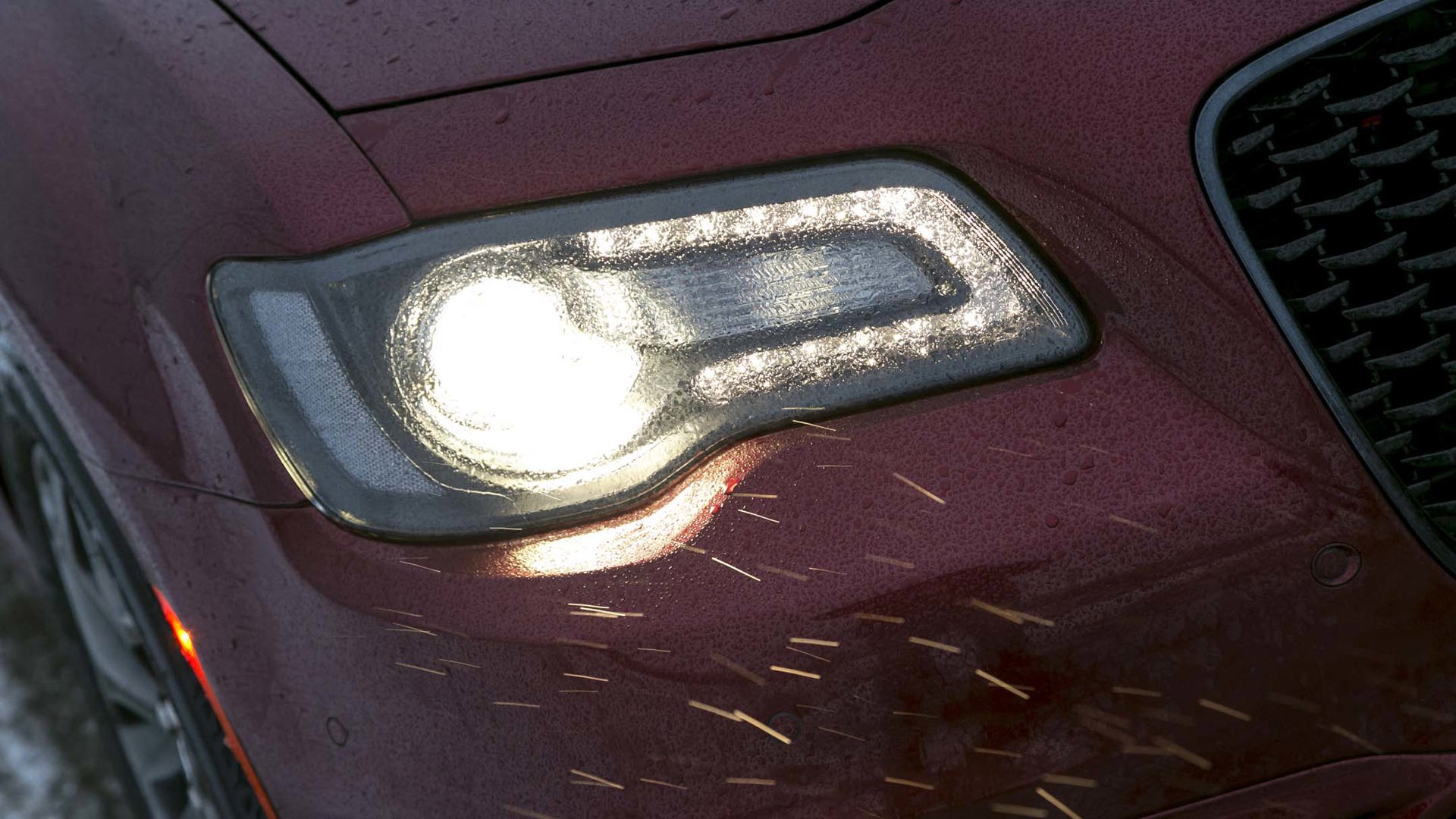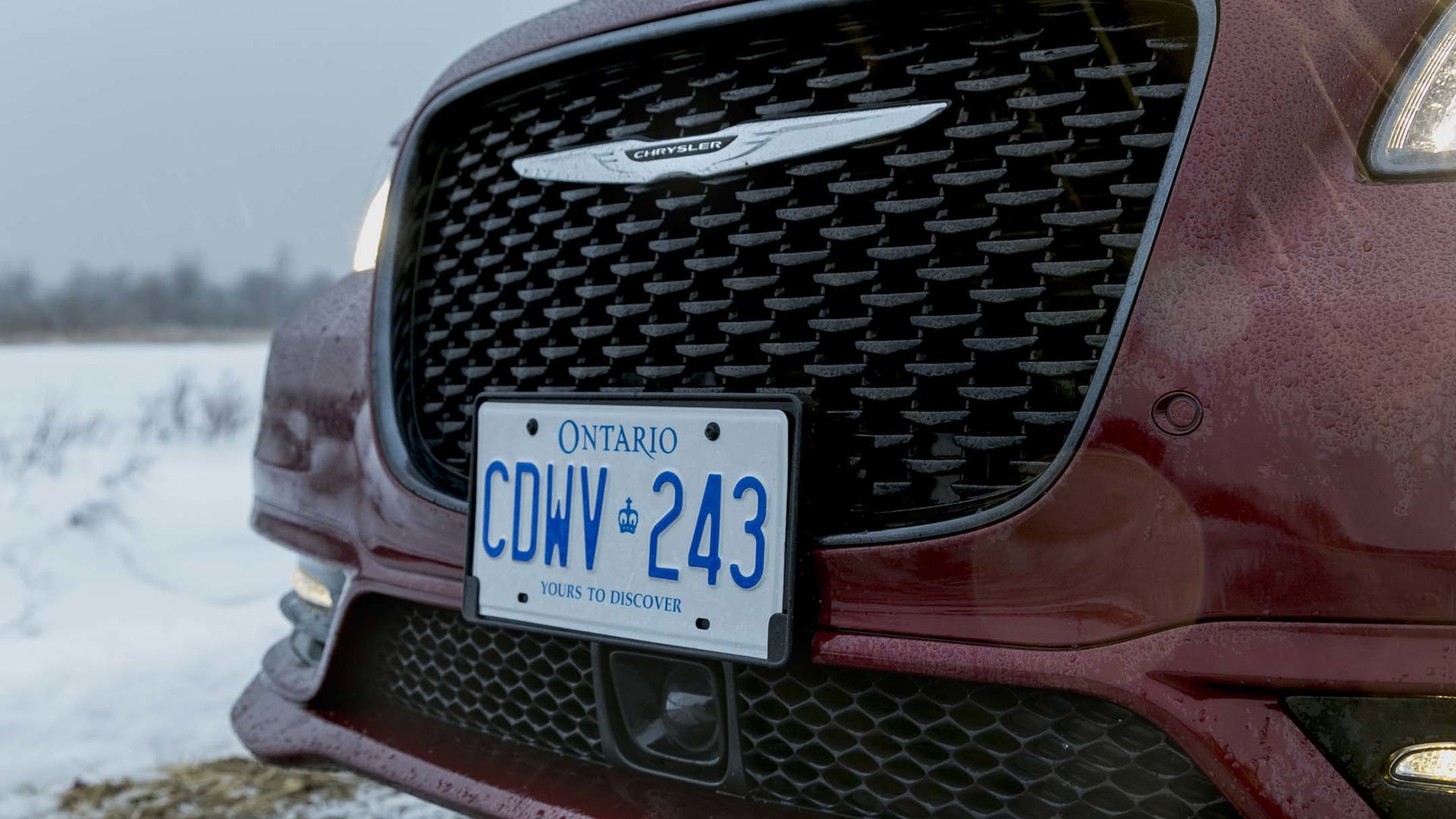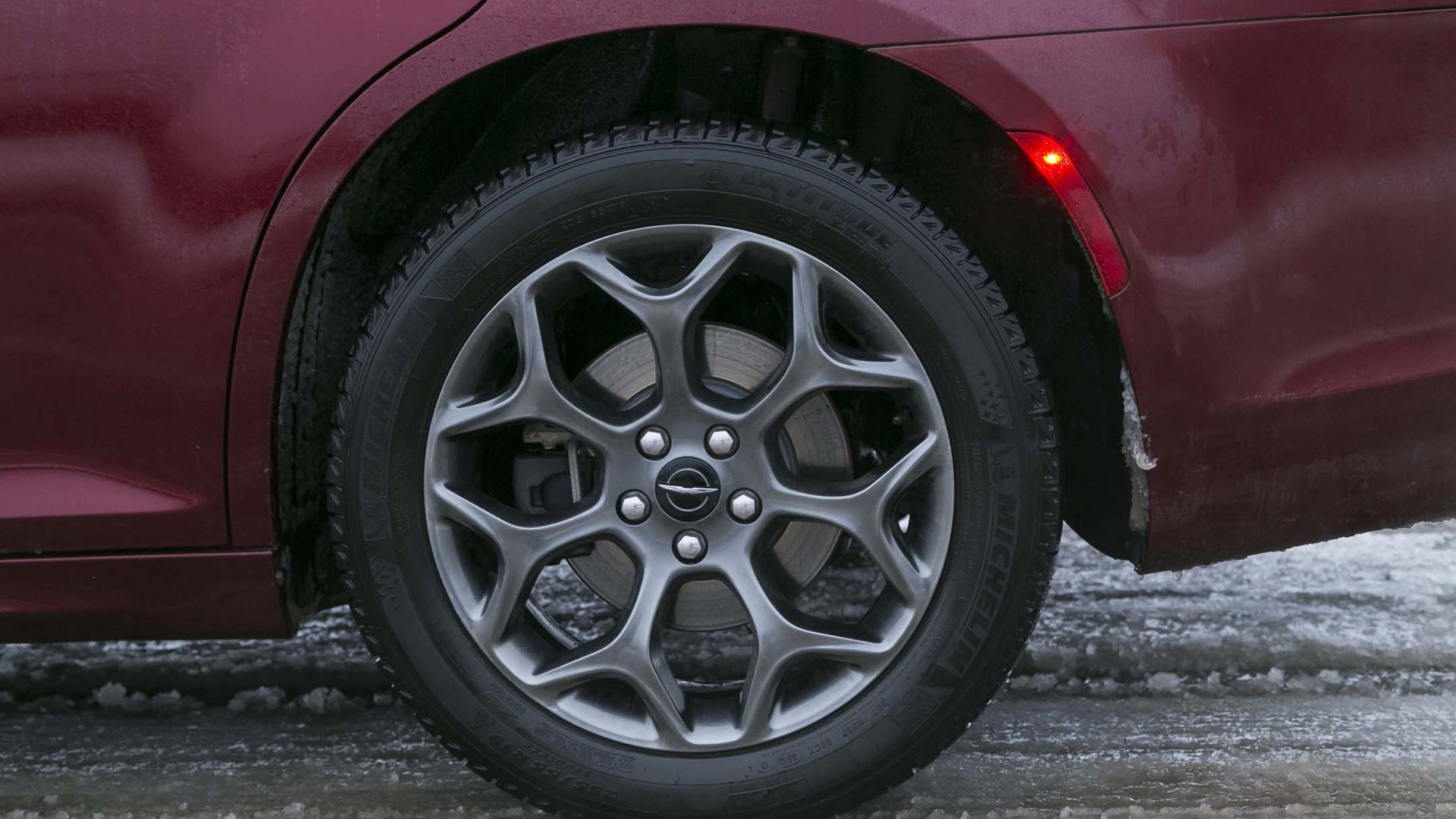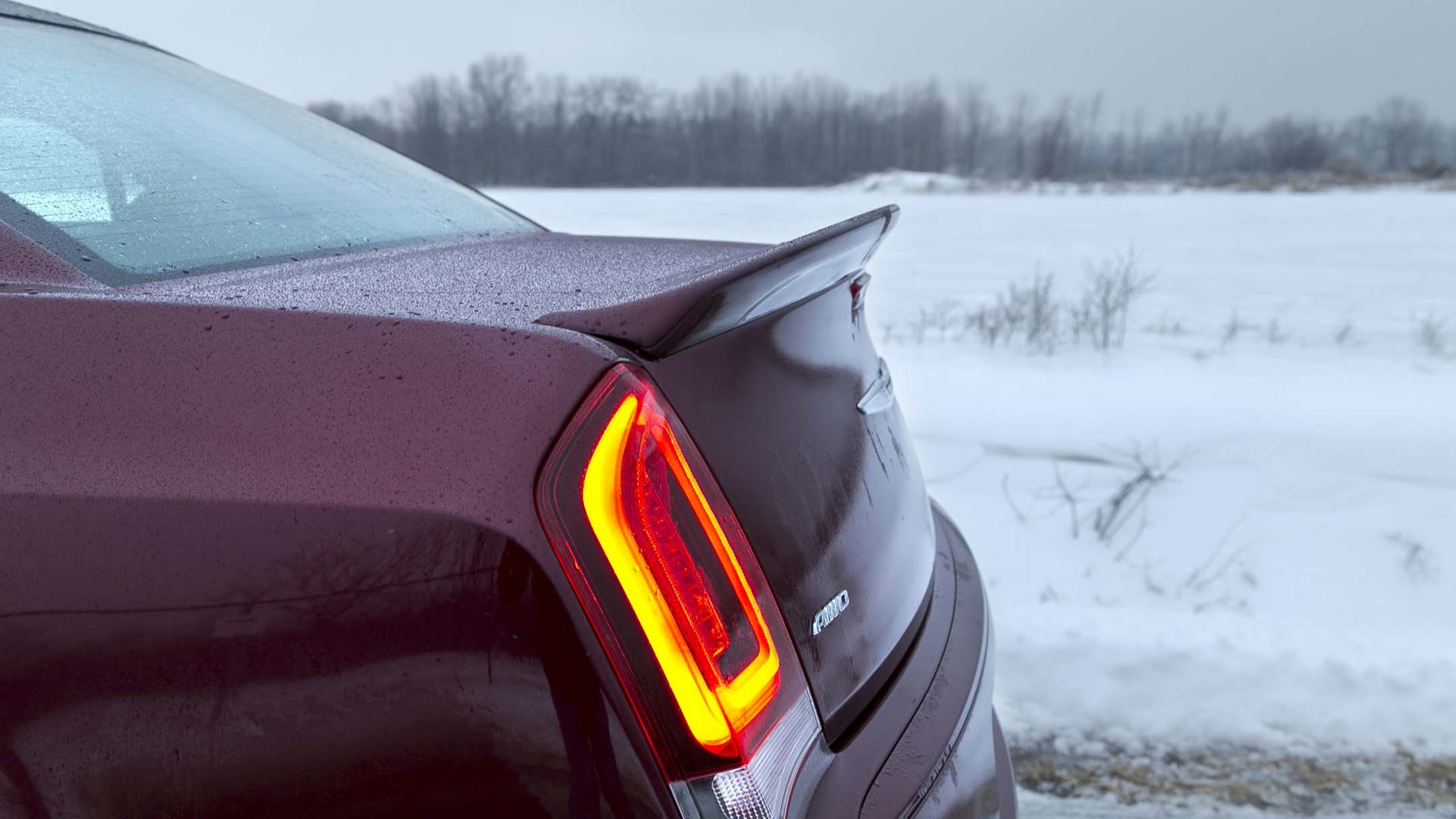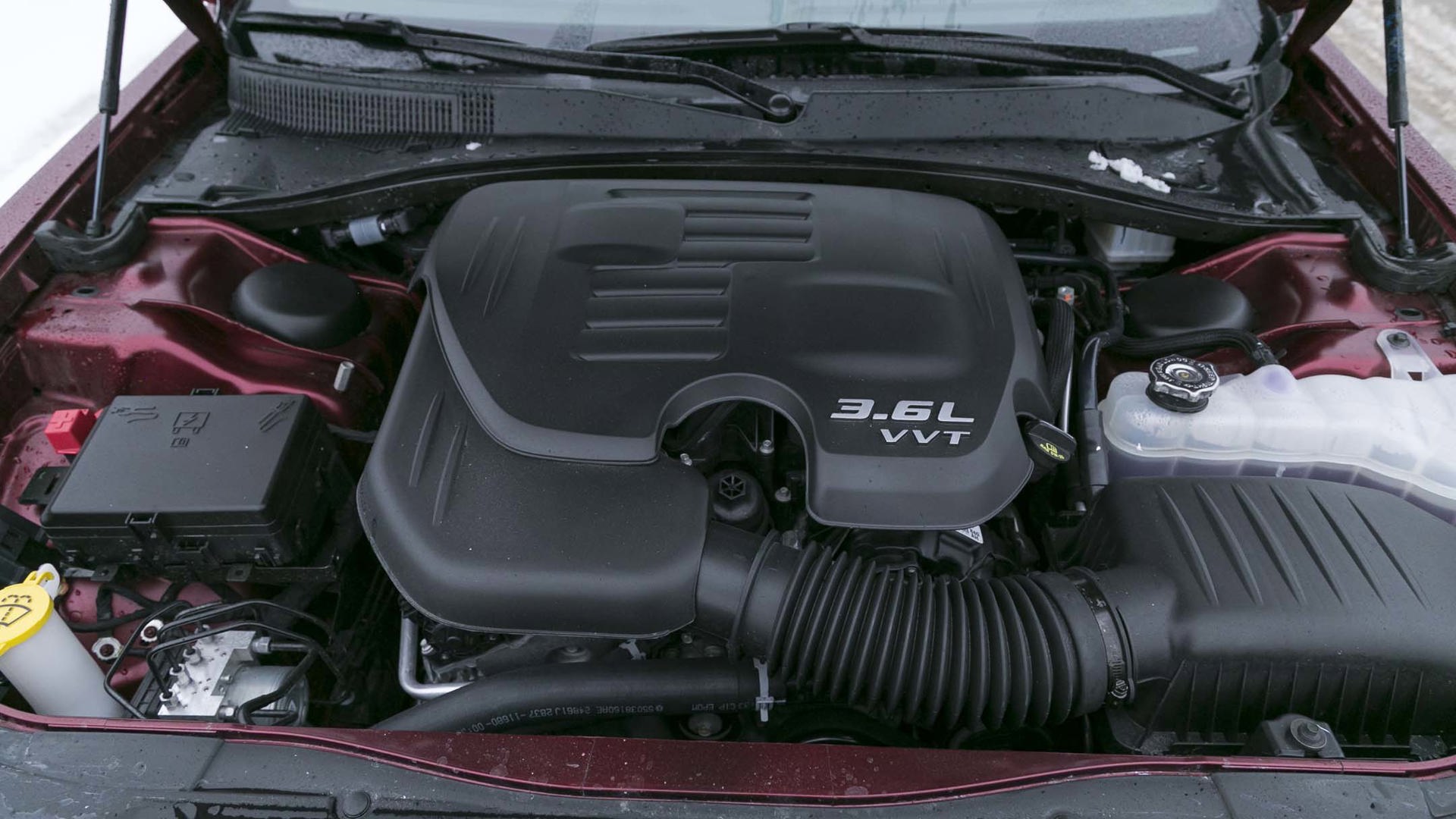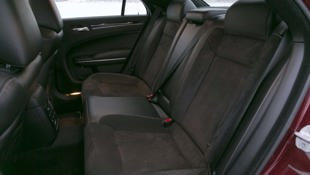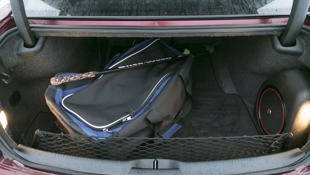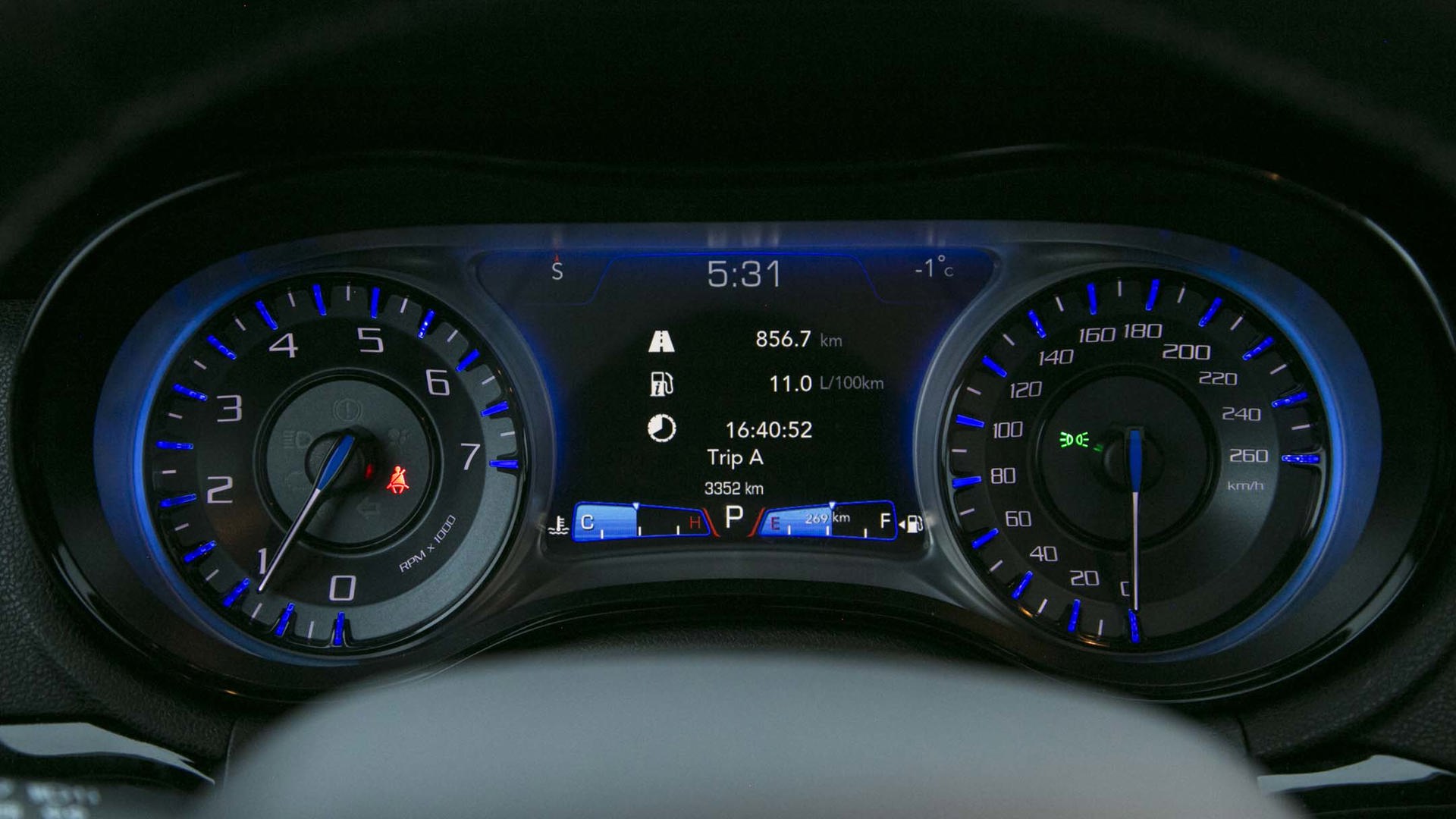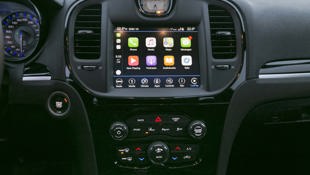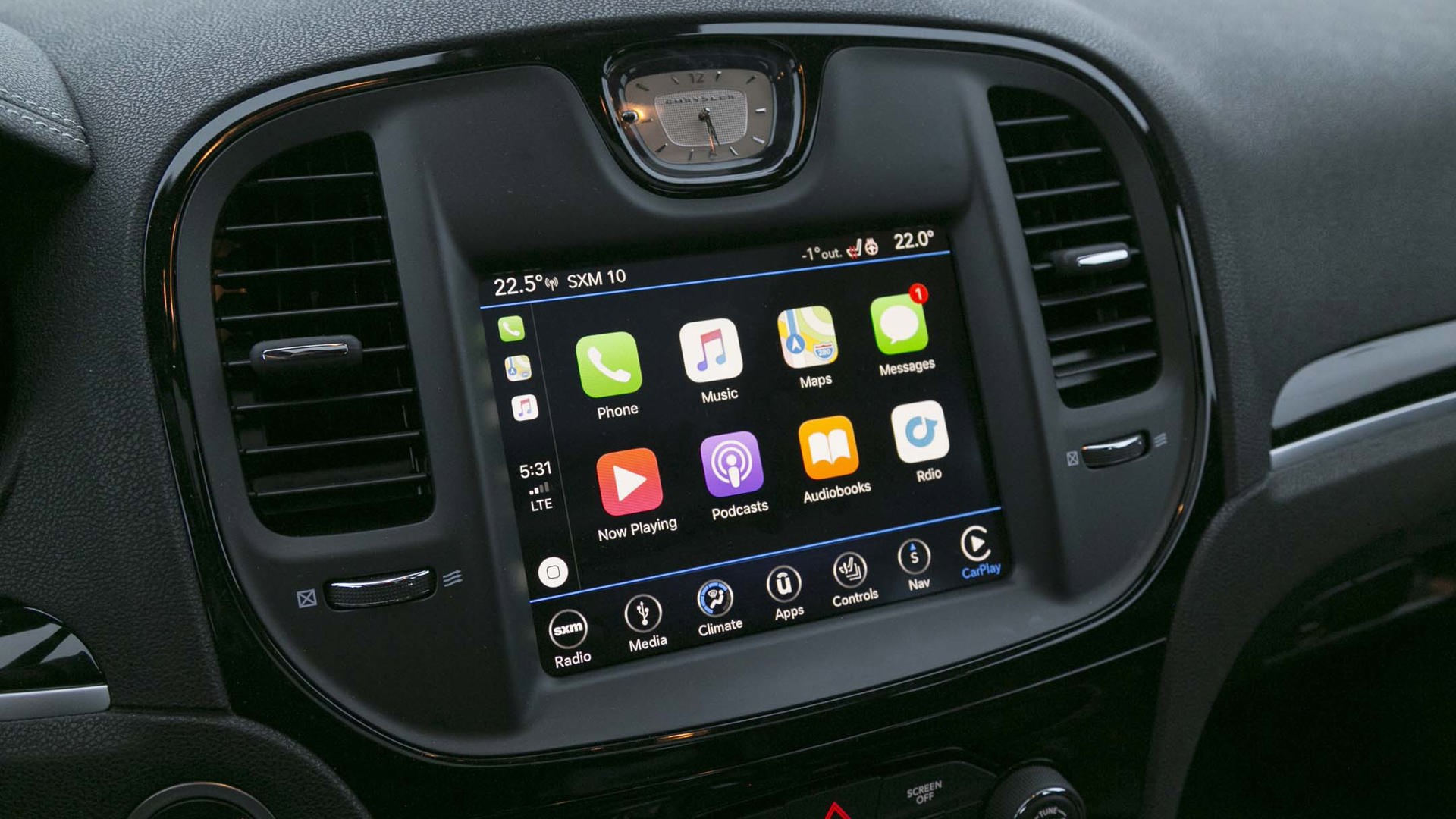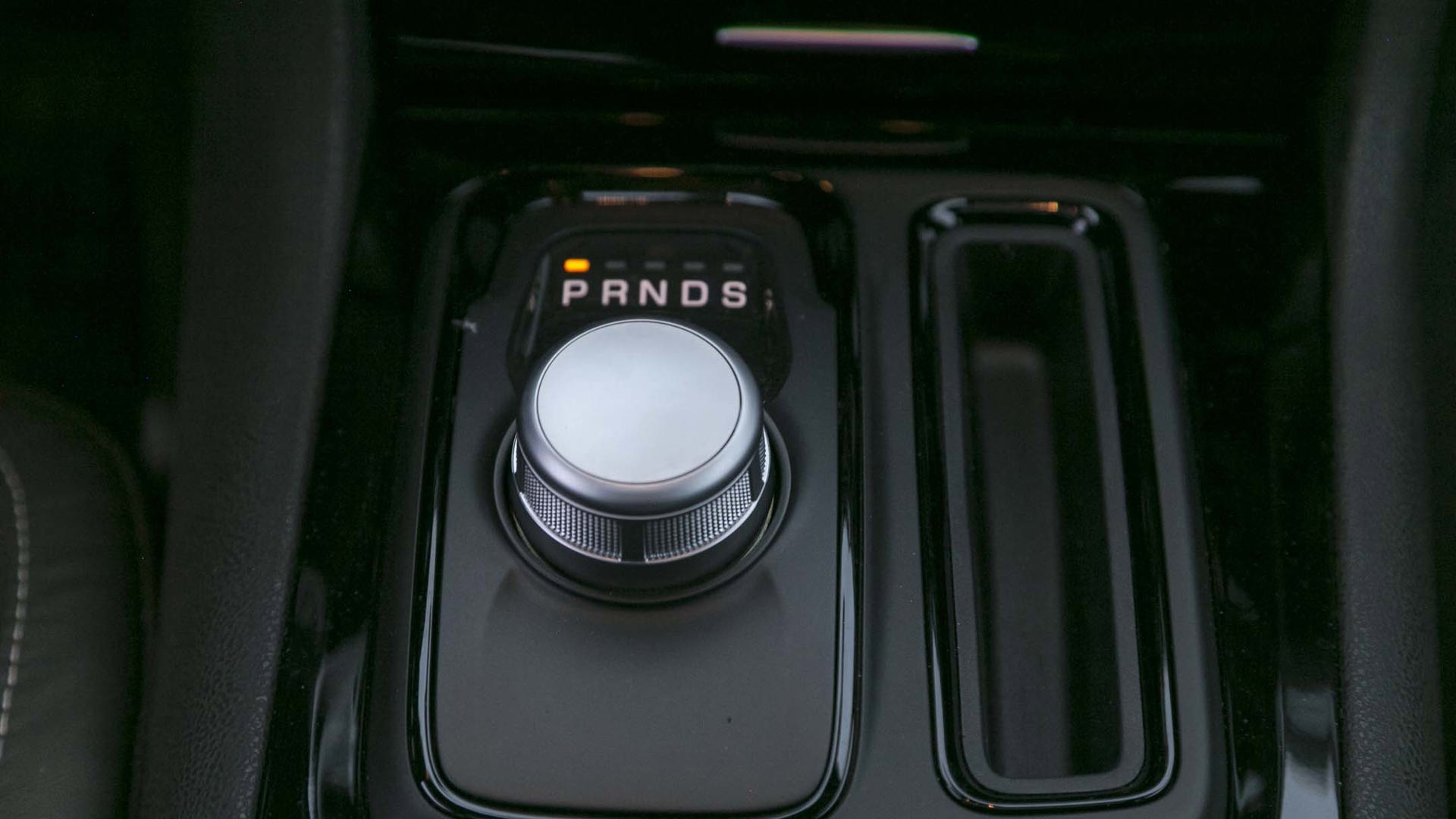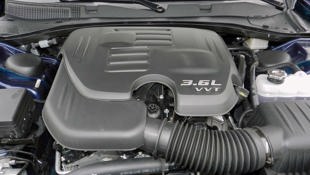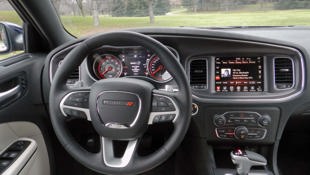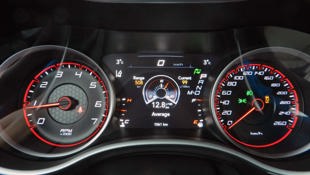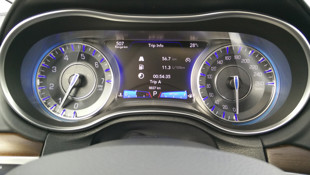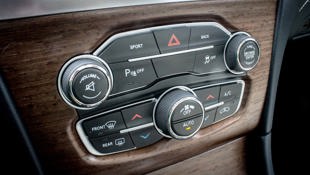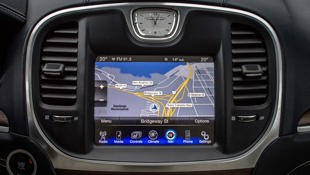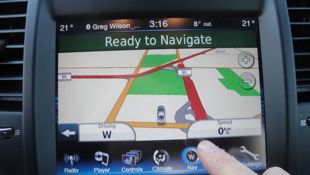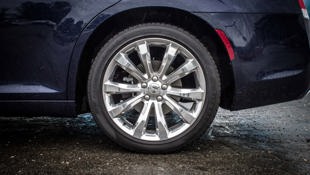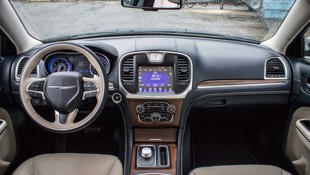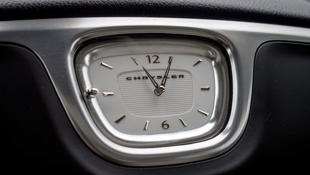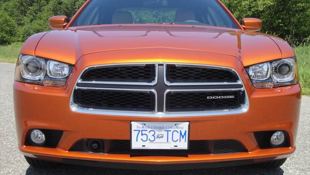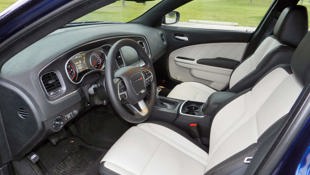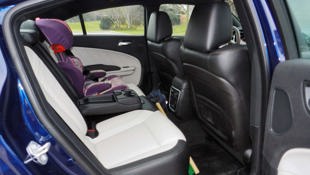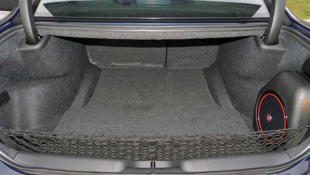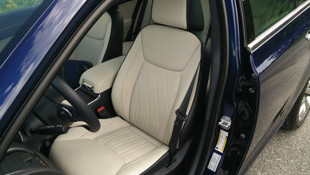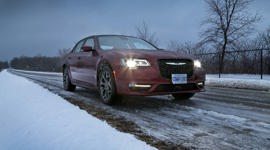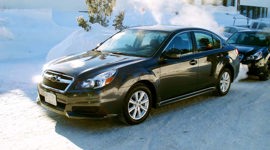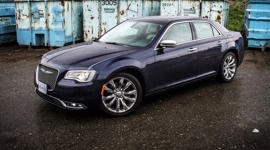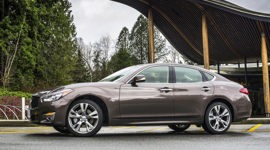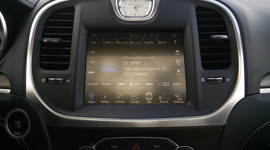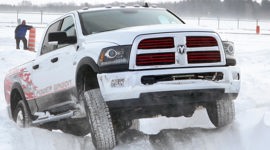Vehicle Type
Fuel-efficient performance, immense on-board space, good overall value, comfortable and quiet drive, and the added confidence of AWD traction in inclement weather.
Full-size sedan
History/Description
When it comes to delivering plenty of bold styling and a good helping of American muscle, few family sedans pack the same affordable punch as the Dodge Charger. With generous sizing, available V8 power, available all-wheel drive (AWD) and a model for just about any need or budget, Charger is backed by a slew of awards and thousands of happy owners.
The most current generation of Charger launched for model year 2011, and has undergone several updates over the past years. All models are four-door, five-seaters with generous interior and trunk space. Feature content included premium audio, leather seats, hard-drive music storage, and xenon lighting for enhanced nighttime visibility and confidence. Bluetooth, navigation, automatic climate control, radar cruise, sunroof, and push-button ignition were all on board, too.
Charger was available in a slew of model grades and trim levels, including high-performing SRT variants. For the purposes of this story, we’ll focus on mainstream Charger models from basic to R/T, and save the SRT and SRT Hellcat variants for their own review.
Engines/Trim
Look for a 3.6-litre V6 engine on many used models, with output rated between 292 and 305 horsepower, depending on the year and model in question. Rear-wheel drive was standard, though all-wheel drive was available, depending on the model in question. The 5.7-litre Hemi V8 could also be specified, with 360–370 horsepower.
All units got an automatic transmission, and the 2013 model year saw the introduction of a new eight-speed automatic, which boosted performance and fuel efficiency.
More basic units included the SE and SXT, while the GT and R/T models dialled up performance and equipment levels. If you’re set on Hemi V8 power, the R/T is the model you’re after.
Note that, since the Chrysler 300 shared most components, sub-systems, and powertrain hardware with the Dodge Charger, most information below can be applied to either machine.
What Owners Like
This generation of Charger is well-rated by owners for its blend of fuel-efficient performance, immense on-board space, good overall value, comfortable and quiet drive, and the added confidence of AWD traction in inclement weather. A good selection of upscale features and the unique, instantly recognizable design help round out the package.
What Owners Dislike
Some owners wish for brighter headlights, and a higher-quality feel to some of the interior trimmings. Also, owners note that while the wide-opening doors make it easy to get in and out of the car, they also require a long reach back outside to close them.
Here are some owner reviews.
Pro Tip: Software Updates
The Dodge Charger you’re considering is a complicated car, controlled largely by computers and electronics that are interconnected and have a say in the operation of hundreds of vehicle functions. As these systems are software-controlled, sometimes, updated software is available to correct a problem or fend off an issue pre-emptively.
Your dealer can check for the availability of software updates that pertain to the specific model you’re considering, if you provide them with the VIN number. Use this to determine which, if any, software updates are available for the car you’re considering, and plan to have those software updates installed as soon as possible. This is a great way to maintain worry-free operation for the long haul, and keep potential problems from appearing.
Pro Tip: Certified Pre-Owned
We’d advise shoppers to consider a Certified Pre-Owned copy of a used Charger from this generation. Typically, a CPO vehicle is fully inspected, updated, and reconditioned by the selling dealer – adding more peace of mind for shoppers. Buying a CPO Charger typically means all maintenance work, recalls, and software updates are up to date – giving new owners less to worry about. Further, CPO vehicles may come with extended warranty coverage and additional roadside assistance coverage, too.
The Test Drive
Recalls
This generation Dodge Charger was subject to an extensive list of safety recalls, with over 20 individual recalls issued to correct latent safety defects. Work with your local dealer and the vehicle’s VIN number to determine which, if any, of these recalls are in effect for the vehicle you choose. If any recall work is outstanding, plan to have it completed as soon as possible. Recall work is carried out by the dealer, free of charge.
Modifications
Most used car shoppers are best to seek out a used copy of the vehicle of their choosing that hasn’t been modified by previous owners. According to numerous popular owner forums, the Dodge Charger was a popular candidate for customization – with many owners installing non-factory suspension, body, electronic, and engine parts. Though many modifications are no cause for alarm, some can negatively affect the durability, performance, and safety of the vehicle, and may void portions (or the entirety) of any remaining factory warranty coverage. For best results, seek out a model that is factory stock and hasn’t ever been modified.
Check the Heat
With the Charger warmed up after your test drive, pay some attention to the climate control system. Turn on the fan and set the temperature control dial about halfway to the “full hot” setting. Confirm that the air temperature coming from the selected vents is warm. Slowly increase the temperature via the dial, and confirm that the air from the vents increases in temperature. If that’s not the case, or if there’s no detectable heat until the dial is set to “full hot”, the vehicle may need some attention to its thermostat, radiator, coolant level, or climate control system blend-doors. A dealer is the best to investigate this issue. Here’s some more reading.
Electronic Resets
Here’s a handy thread outlining how owners may be able to remedy any number of a variety of different niggling issues caused by wonky electronics. It outlines how to reset or auto-recalibrate various vehicle systems, which may be useful in situations where throttle response, ESP system operation, or even window operation seems to be out of whack. Note these are possible solutions only – and if they don’t address the problem, you’ll need a professional to investigate.
Infotainment
Confirm proper operation of the UConnect system, if equipped, by setting a navigation destination, placing a call via Bluetooth, cycling through various media sources, and giving the system a full workout. Confirm that the back-up camera is working, too. If the system doesn’t seem to be operating properly, it may need to be hard-reset, or replaced outright. You’ll want to know which (if either) is the case, before you buy.
The Brakes
Based on this discussion, test drivers are advised to pay close attention to the “feel” and performance of the brakes on the car they’re considering, before they buy. Many owners have reported faster-than-expected wear of the factory brake parts, which can result in a pulsation or throbbing sensation from the brake pedal while stopping; a soft pedal feel; or unwanted scraping, squealing, or grinding sounds audible at lower speeds, when the brakes are applied. If the brakes make any unwelcome sounds or sensations while in use, or don’t immediately start to slow the vehicle down when applied lightly, have a technician assess the braking system. Now’s the time to see if the seller is trying to pass the cost of an upcoming brake-job off to you.
Doors and Door Panels
Some owners of certain model-year units have reported issues with door panels that peel, recede, or warp away from the window. The cause, by most accounts, is due to heat-related deformation of the materials and adhesives involved. Check the Charger you’re considering fully for this problem, and make note of any other interior trim or plastic panelling that’s misaligned. Many drivers report that these problems are easily remedied by the dealer, under warranty.
While checking the doors and door panels, confirm proper operation of the door handle, power window, power lock, and all door-mounted switches, too.
Driveline
Though some owners have reported issues with the Charger’s V6 and 5.7-litre V8 engine (and the automatic transmission), these problems aren’t reported with enough frequency and consistency against total sales volume to call out any flag-raising systematic or widespread issue. Charger’s mainstream drivelines seem to be relatively solid performers as they age, based on research for this, and similar, used car reviews.
Still, for maximum peace of mind, shoppers are advised to take steps in ensuring that all maintenance (including coolant changes, transmission fluid changes, and spark plug replacement) are up to date, that the engine isn’t storing any trouble codes (this is revealed through a diagnostic scan, which is advisable whether or not a Check Engine light is illuminated), and that all available software updates relating to the engine and transmission have been applied.
Other Useful Checks
Rear Quarters
Most test drives focus on what’s near the driver, but don’t forget about Charger’s rear seating area, which is where your passengers will spend plenty of time. Before you buy, confirm that all rear-seat electronics, including windows, locks, heated seats (if equipped) and any rear-seat climate controls or entertainment provisions are functioning as intended. It’s a good idea to make sure that the folding rear seat mechanisms are all in proper working order, too.
Brakes
The lifespan of a vehicle’s braking system is affected to many factors, though a quick test on your test drive can help determine how healthy it is: Where appropriate, apply full stopping power in a straight line from a decent speed, perhaps on an empty secondary road. If the pedal feels soft or goes to the floor, or if the vehicle pulls to one side or the other in response to hard braking, the brakes need attention from a professional.
Get a Good Battery
A weak or dying battery can wreak havoc with the electronics in a modern vehicle. As such, shoppers are advised to have the battery tested in any Charger they’re considering, at the first sign of any trouble with any electronics-related system in the vehicle. If the battery doesn’t pass the test with flying colours, replace it as soon as possible. Do not underestimate the volume of issues that can be caused by a battery that’s providing inconsistent power to vehicle subsystems.
Verdict
Though a few areas of the Charger require careful inspection, more major issues are reported somewhat infrequently, and the more commonly reported problems tend to be more minor in nature. Buy confidently once you’ve found a well-maintained, factory-stock Charger or 300C of your liking, and had it treated to a full inspection by a professional.
Crash Test Results
IIHS: Top Safety Pick (2011–2013)
NHTSA: 5/5 stars (2013)
